Concrete floors are no longer reserved for industrial spaces or garages—they've become a sleek, stylish option for modern kitchens. With their blend of durability, versatility, and minimalistic appeal, concrete floors offer endless design possibilities. Whether you're aiming for a polished, industrial look or something more warm and rustic, there are countless ways to incorporate concrete into your kitchen. These 25 durable concrete floor kitchen ideas demonstrate just how adaptable and creative this material can be, making it a perfect choice for those seeking both form and function.
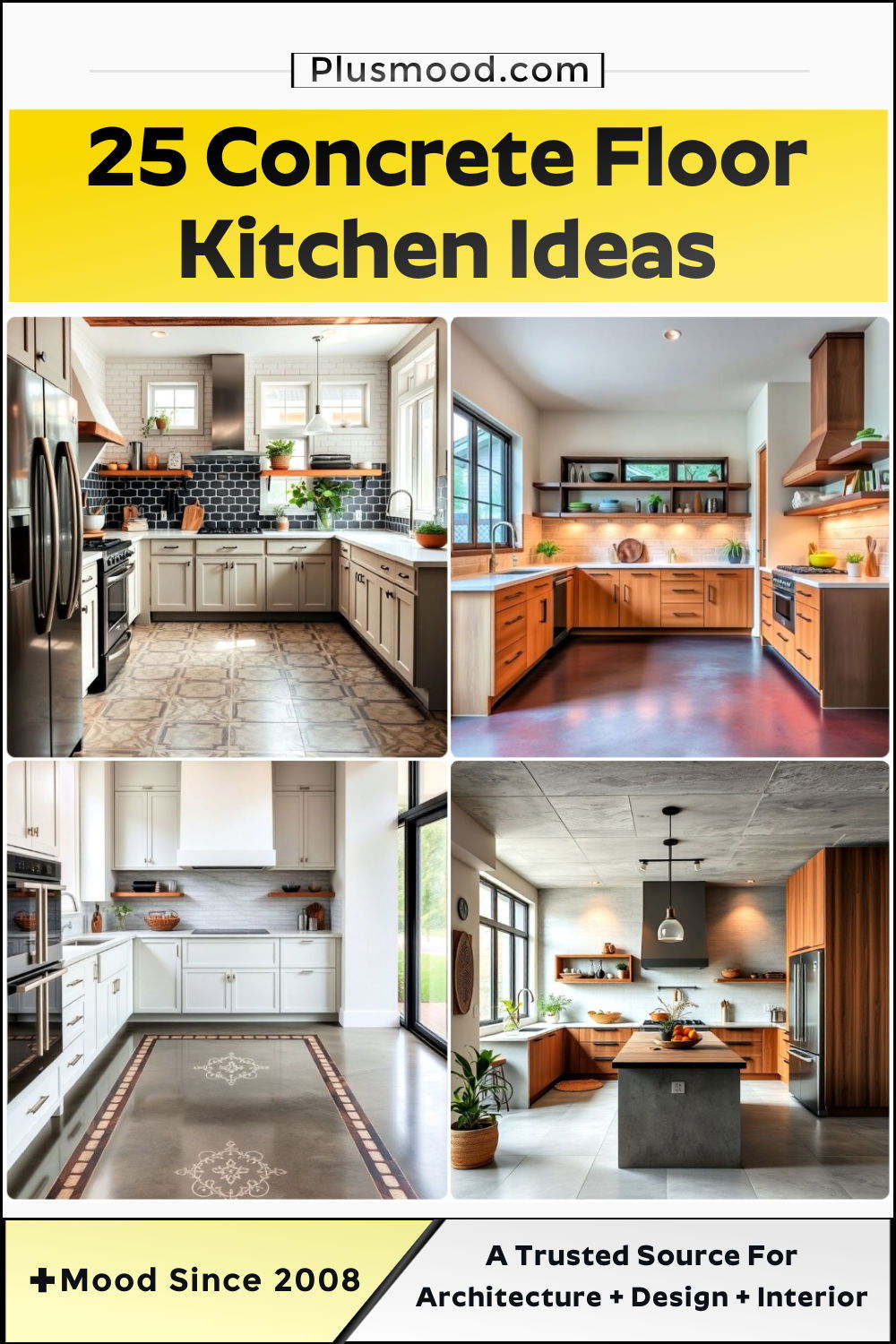
1. Embrace the Industrial Look with Polished Concrete
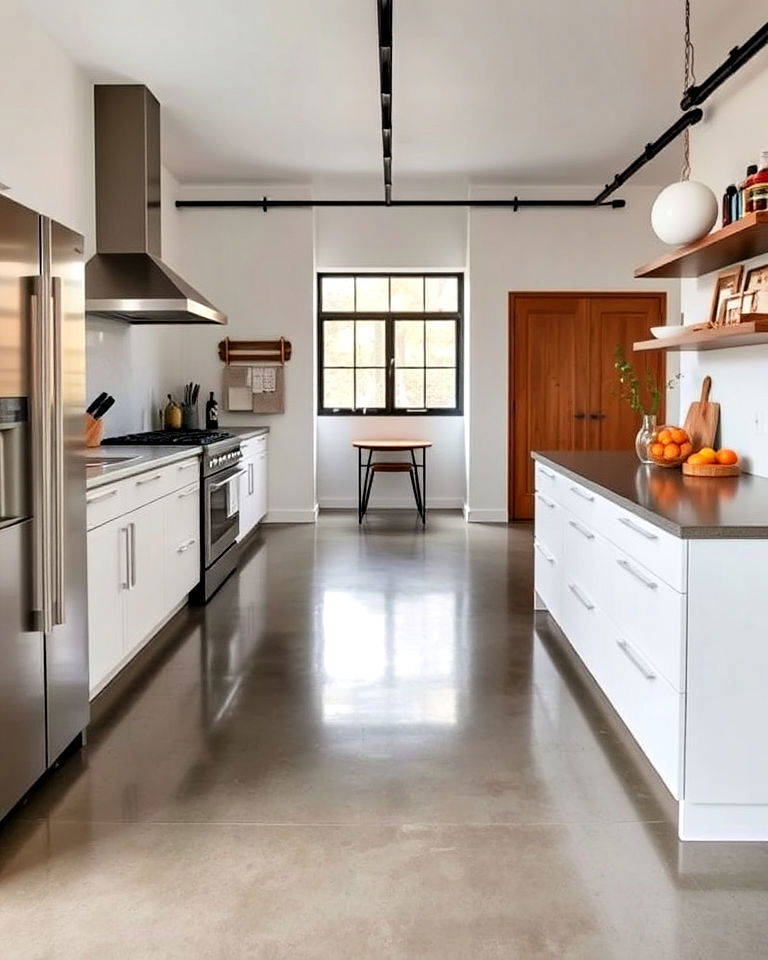
Polished concrete floors in a kitchen offer a sleek, industrial look that combines durability with modern style. The smooth surface reflects light, brightening up the room, and its high-gloss finish makes it easy to clean. This minimalist approach works well with stainless steel appliances and simple cabinetry, creating an urban loft aesthetic. Polished concrete also pairs beautifully with both contemporary and rustic kitchen designs, offering versatility similar to modern concrete fireplace ideas.
2. Add Warmth with Concrete Staining
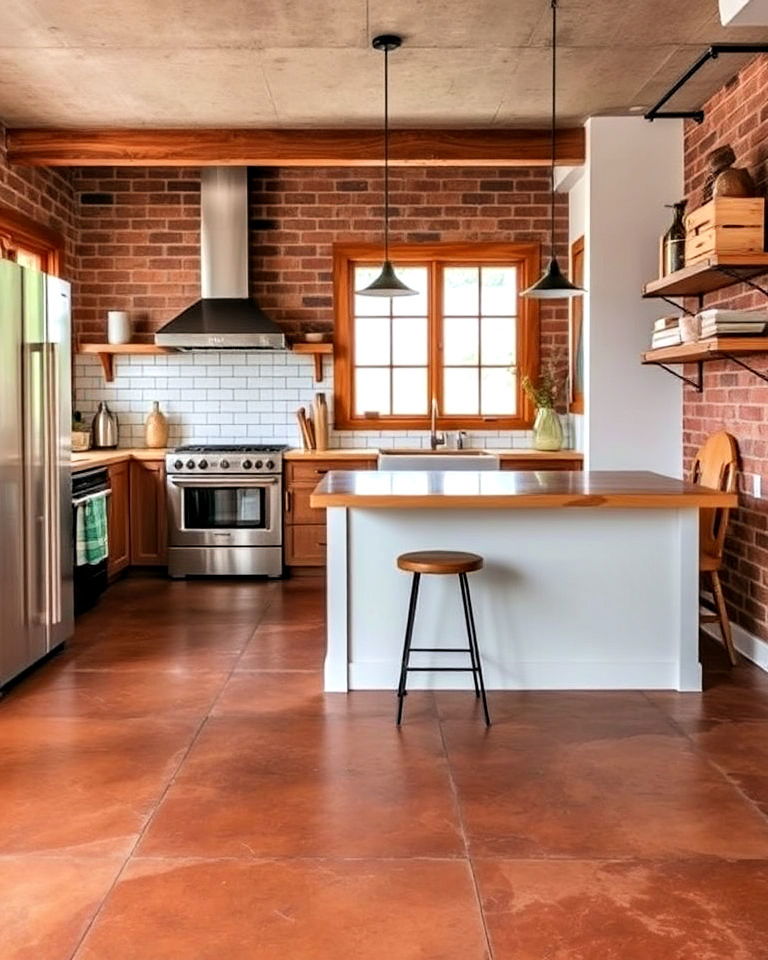
Staining concrete floors is an excellent way to add warmth and depth to your kitchen. With earthy tones like brown, amber, or terracotta, stained concrete can mimic the look of natural stone while maintaining the floor's durability. This finish works well in rustic or farmhouse-style kitchens, offering a textured look that enhances the overall coziness of the space, much like rustic fireplace ideas. The stain also helps mask dirt and wear, making it a practical choice.
3. Enhance with Decorative Stencils
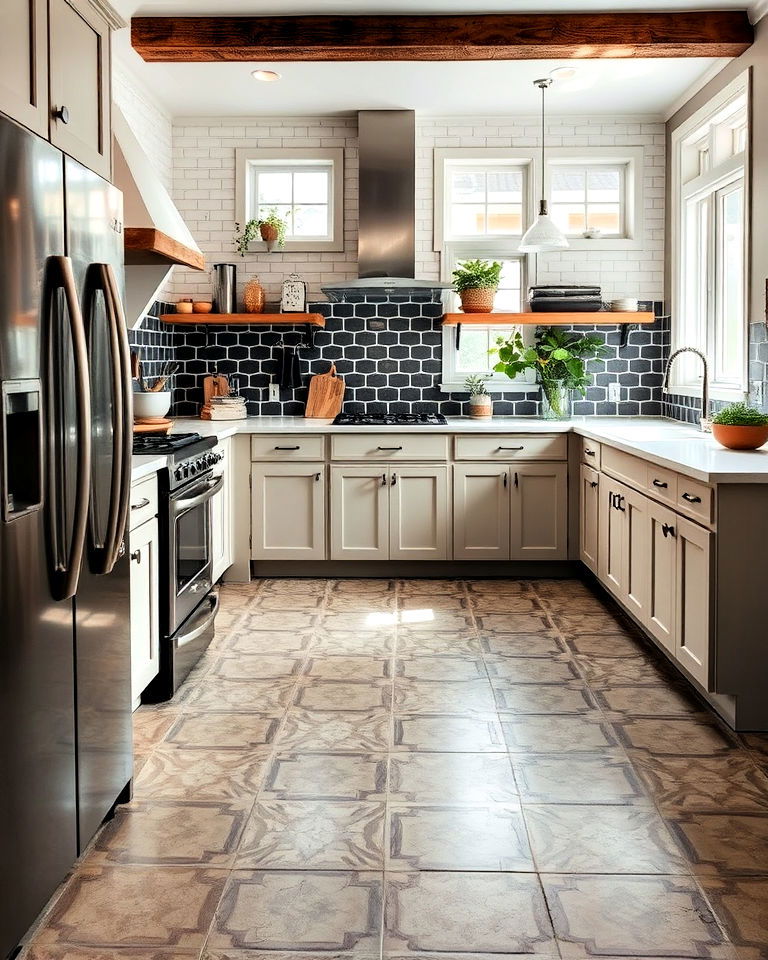
Discover the durability and sleek style of a concrete kitchen floor for a modern, low-maintenance space. Concrete doesn't have to be plain—stencils can transform a basic floor into a statement piece. Add unique patterns or intricate designs with concrete stenciling to bring visual interest to the kitchen or explore concrete floor bedroom ideas for more inspiration. From geometric shapes to more ornate motifs, stenciled concrete floors can complement any style, from modern to traditional. This technique offers endless customization options while still retaining the durability and ease of maintenance that concrete provides.
4. Opt for an Acid-Washed Finish
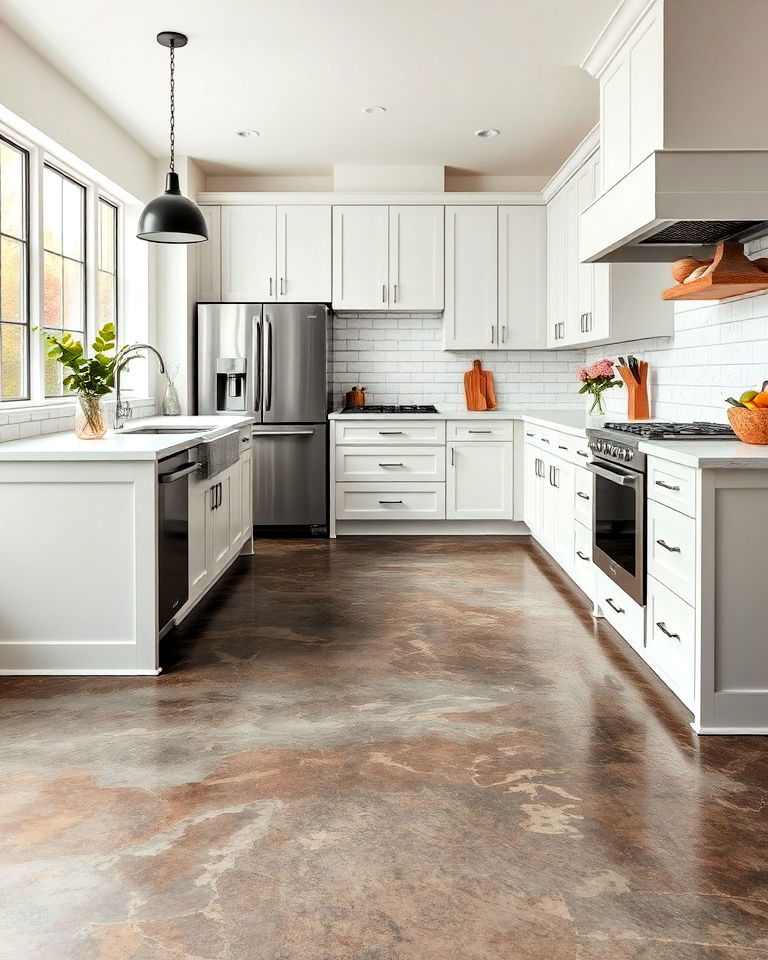
Acid-washed concrete floors deliver a marbled, organic appearance that adds character to any kitchen. This finish can create a beautiful blend of natural tones, from deep grays to rich browns, resulting in a one-of-a-kind floor that complements both contemporary and industrial kitchen styles. Acid washing highlights the natural texture of the concrete while adding an artistic, handcrafted touch that makes the floor stand out, similar to concrete floor living room ideas.
5. Combine Concrete with Wood Elements
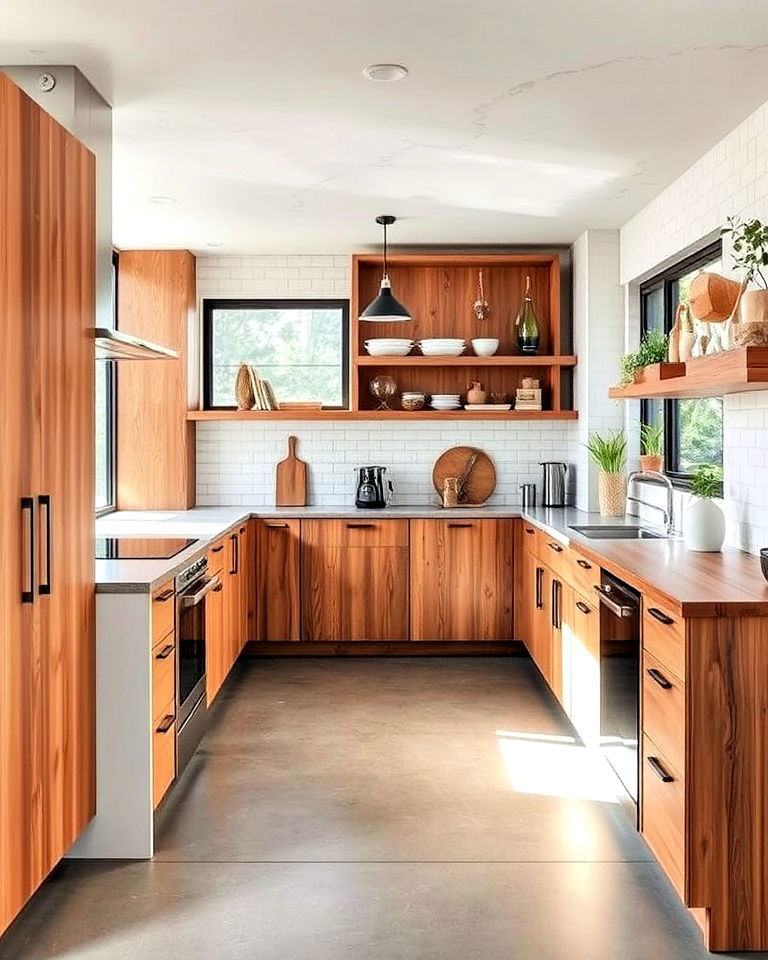
Pairing concrete floors with warm wood accents is a perfect way to soften the starkness of concrete. In a kitchen, you can achieve balance by integrating wooden cabinets, countertops, or shelving. This blend of materials creates an inviting and grounded space that feels both modern and cozy, much like woodland nursery ideas. The natural warmth of wood beautifully contrasts with the cool, sleek nature of concrete, making it a great option for contemporary and rustic kitchens alike.
6. Go for a Matte Finish
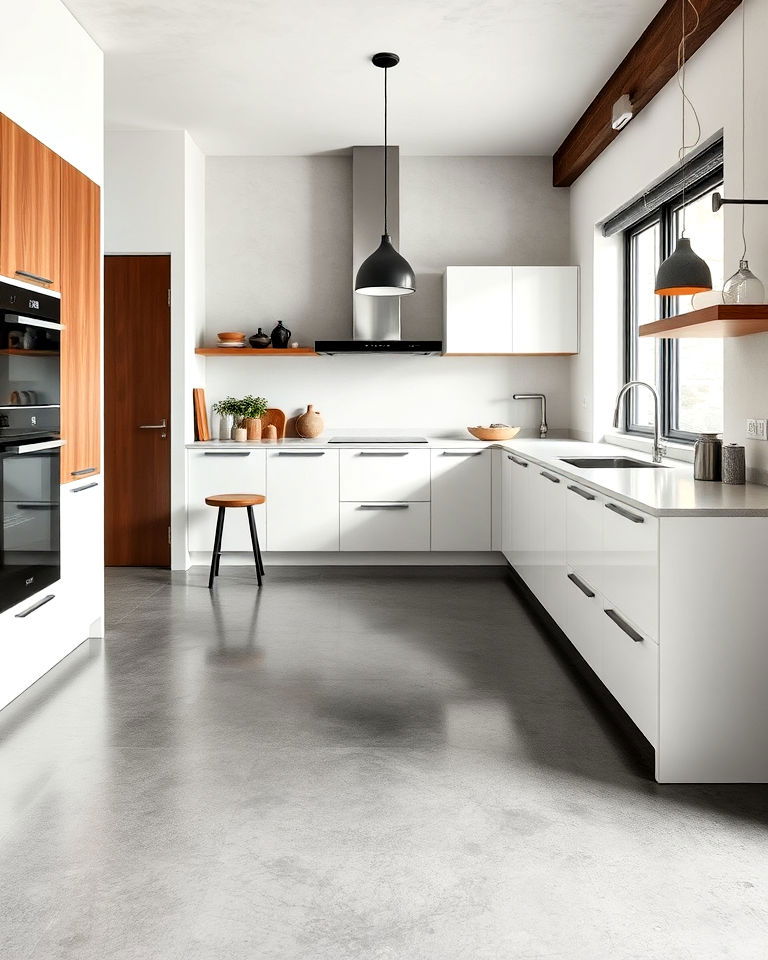
For a more understated look, a matte finish on concrete floors can provide a subtle, elegant effect. This finish is ideal for kitchens where you want the floor to complement the overall design without drawing too much attention. A matte concrete floor is perfect for minimalist kitchens, allowing other elements such as cabinetry or countertops to take center stage, making it an excellent choice for small kitchen ideas. Additionally, the matte texture offers a non-slip surface, enhancing safety in a high-traffic area.
7. Use Concrete to Create Seamless Transitions
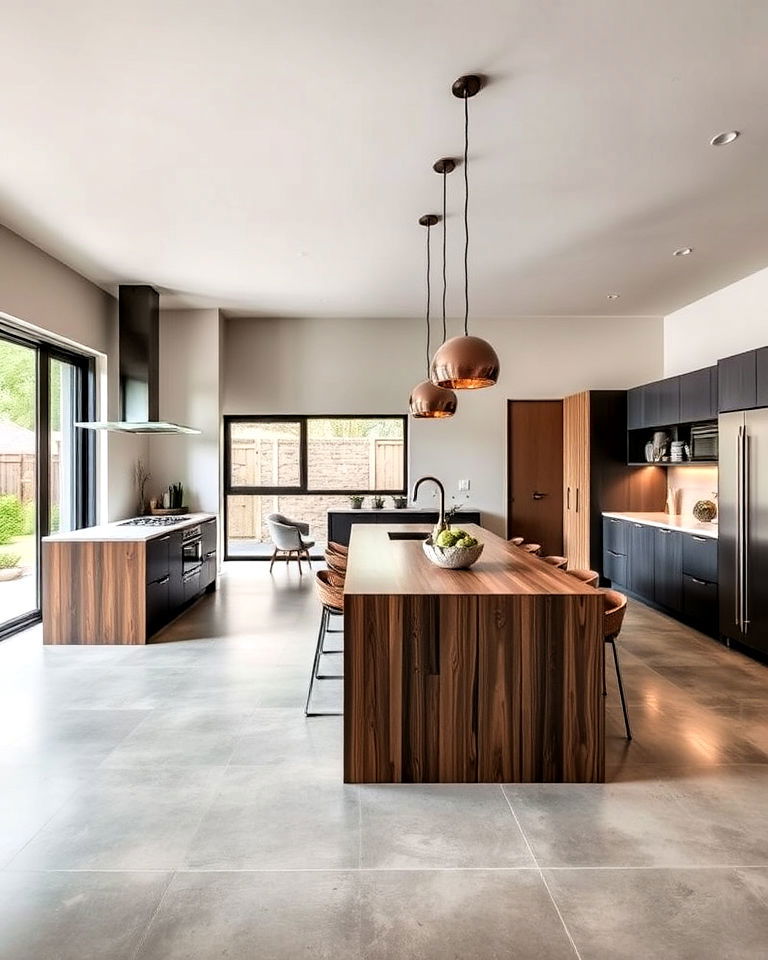
Concrete floors are great for open-plan kitchen layouts, as they allow for seamless transitions between different areas of the home. The continuous flow of concrete from the kitchen into adjacent spaces, such as a dining room or living area, creates a cohesive and modern look that pairs well with a living room with beams. This design approach works especially well in contemporary homes, giving the space a sense of unity and spaciousness.
8. Add Color with Dyed Concrete
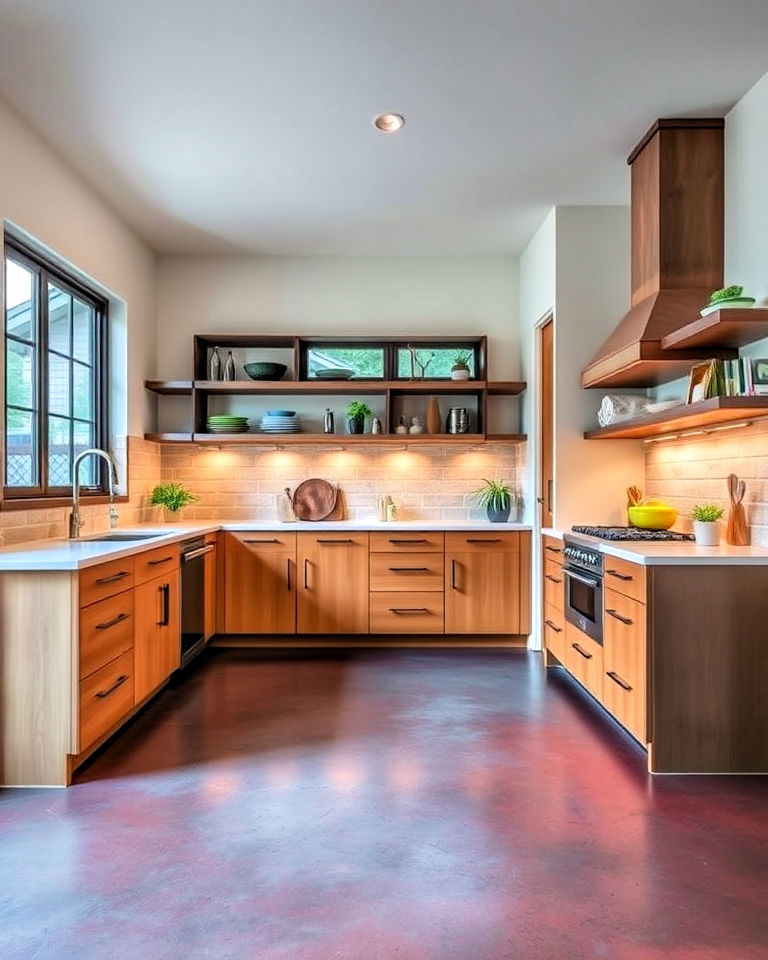
Dyed concrete floors provide a pop of color that can energize your kitchen design. Unlike staining, which reacts with the concrete, dyes penetrate the surface to achieve vibrant, consistent hues. Whether you want soft blues, warm reds, or cool greens, dyed concrete offers a way to personalize your kitchen while maintaining the benefits of concrete, similar to blue and beige bedroom ideas. This approach can be used to create bold, modern kitchens or subtle, earthy spaces.
9. Incorporate Radiant Heating
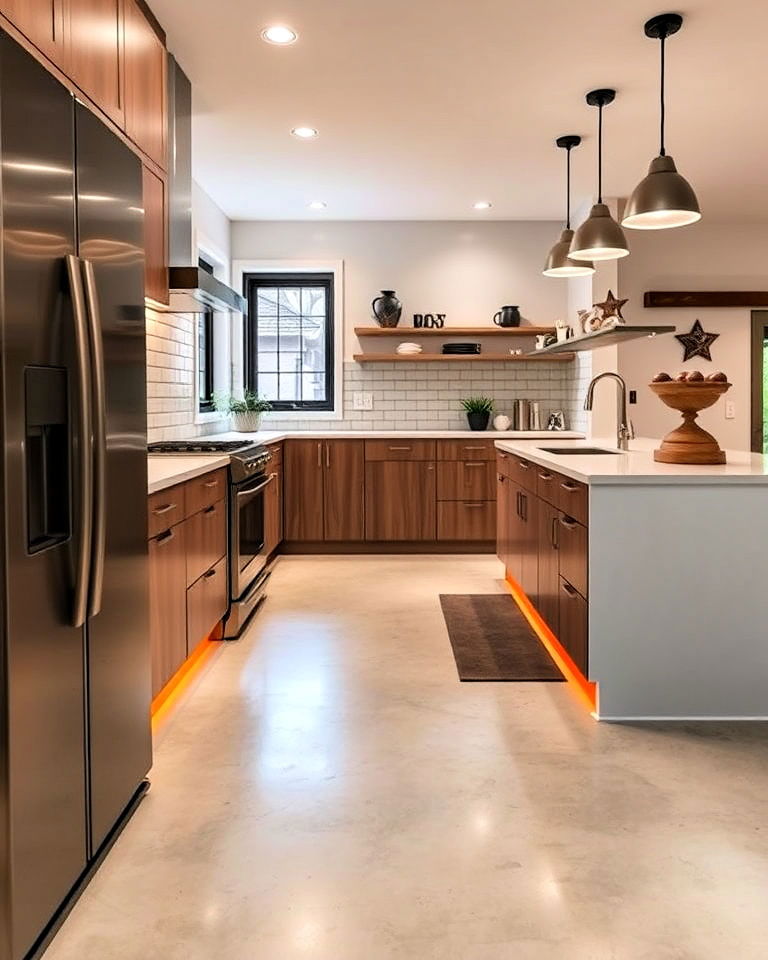
Transform your home with a stylish and resilient concrete floor kitchen design that's both practical and elegant. Cold floors are often a concern with concrete, but incorporating radiant heating can solve that issue while adding luxury. Radiant heat systems installed under concrete floors keep the kitchen warm and comfortable, making this option perfect for homes in colder climates, similar to walk-in shower with bench ideas. This hidden feature not only enhances comfort but also increases energy efficiency by evenly distributing warmth throughout the room.
10. Combine Concrete with Terrazzo
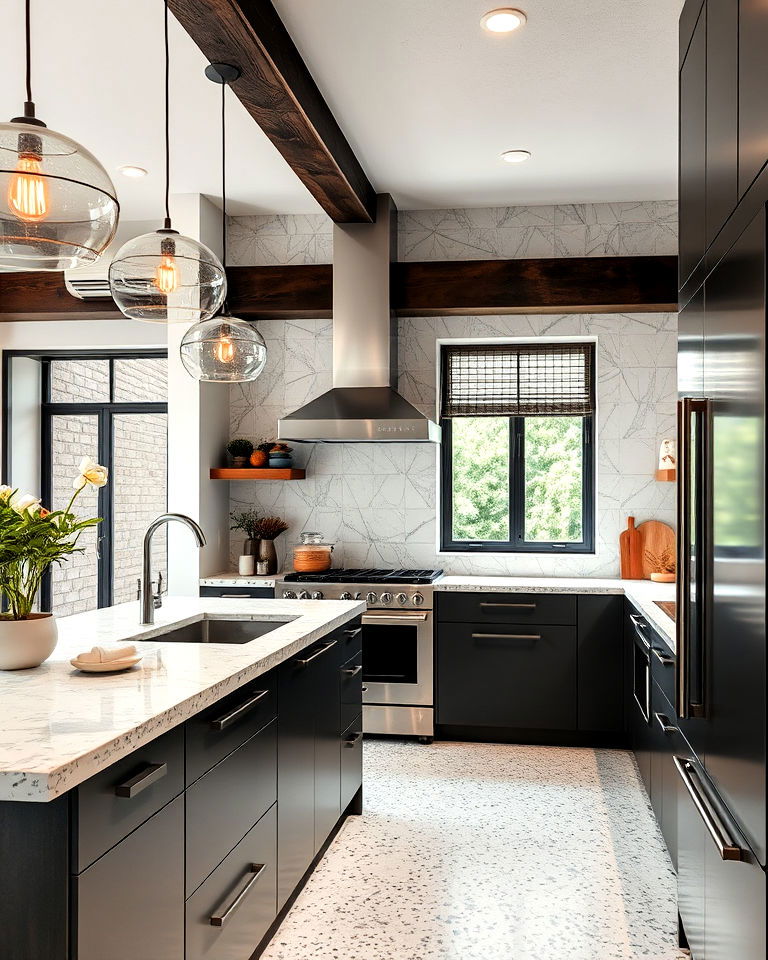
For a stylish and creative kitchen floor, consider combining concrete with terrazzo. This unique look mixes concrete with pieces of marble, glass, or granite for a speckled, high-end finish. Terrazzo offers durability and easy maintenance, making it a smart choice for busy kitchens. The mix of materials can add visual interest and texture, while the customizable nature of terrazzo allows you to choose color schemes that complement your kitchen's overall design.
11. Add a Glossy Epoxy Coating
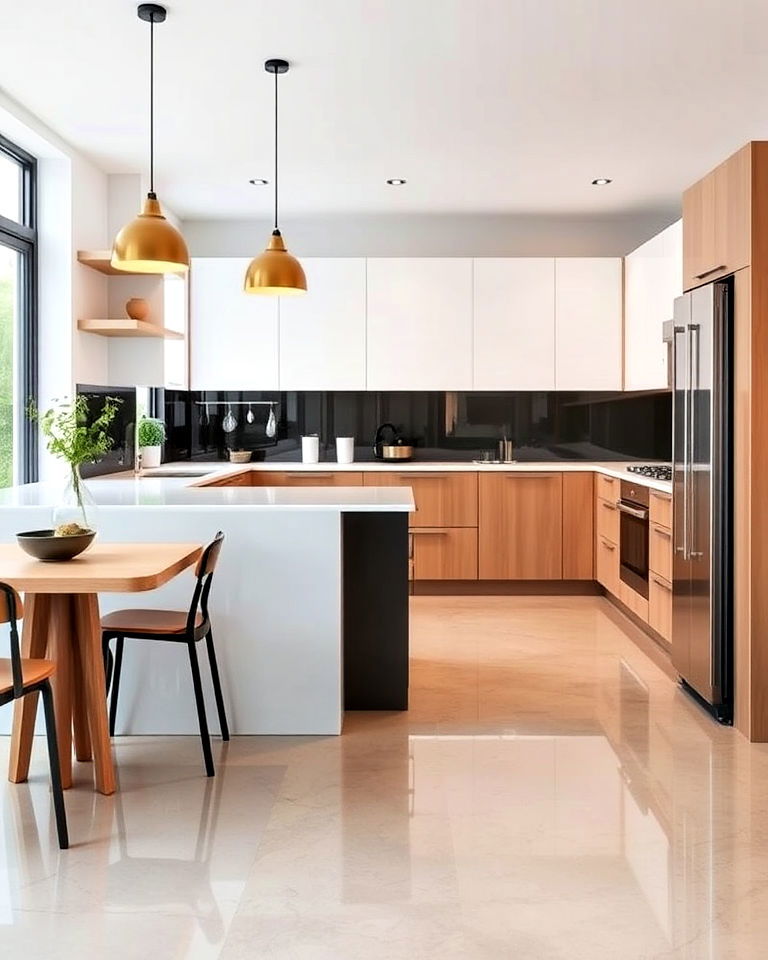
If you're looking to protect your concrete kitchen floor and enhance its appearance, a glossy epoxy coating is a great option. Epoxy not only seals the concrete, preventing stains and damage, but it also creates a smooth, reflective surface that brightens the space. This high-gloss finish is especially suitable for modern kitchens with sleek lines and minimal decor, adding a polished touch to the overall look, much like modern fireplace ideas.
12. Choose Large Concrete Tiles
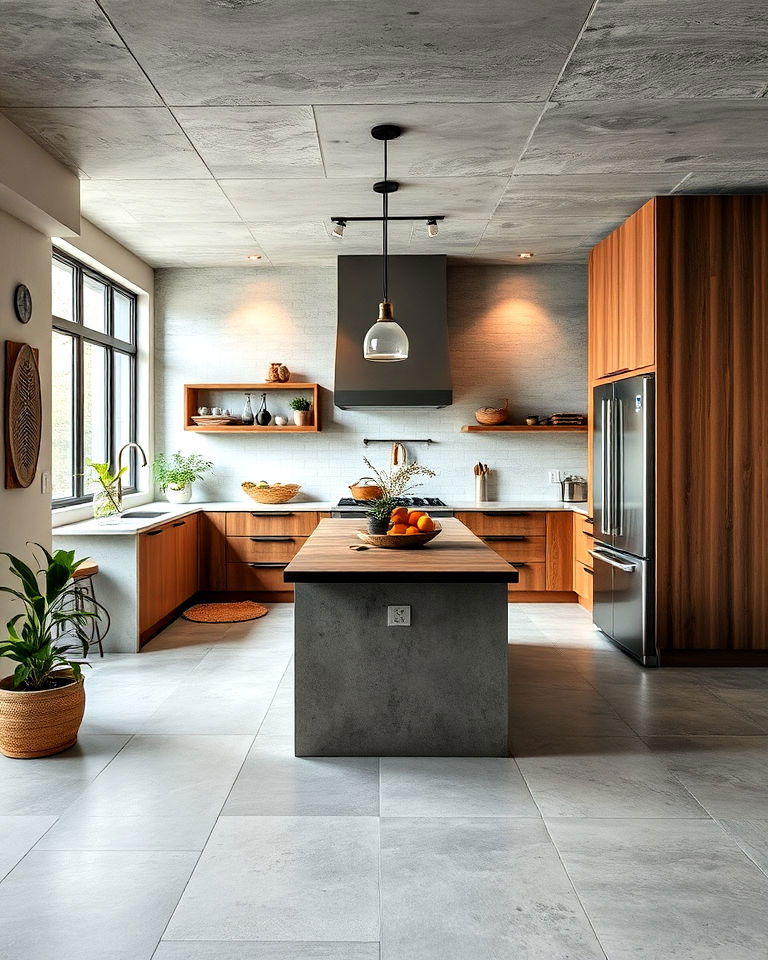
Concrete tiles offer the same durability as poured concrete but allow for easier installation and repair. Large-format concrete tiles in the kitchen can create a seamless look while offering the added benefit of being replaceable if damaged, making them a great fit for industrial dining room ideas. The oversized tiles also reduce the number of grout lines, contributing to a cleaner, more minimalist appearance. These tiles work well in both contemporary and industrial kitchen designs.
13. Highlight with Geometric Patterns
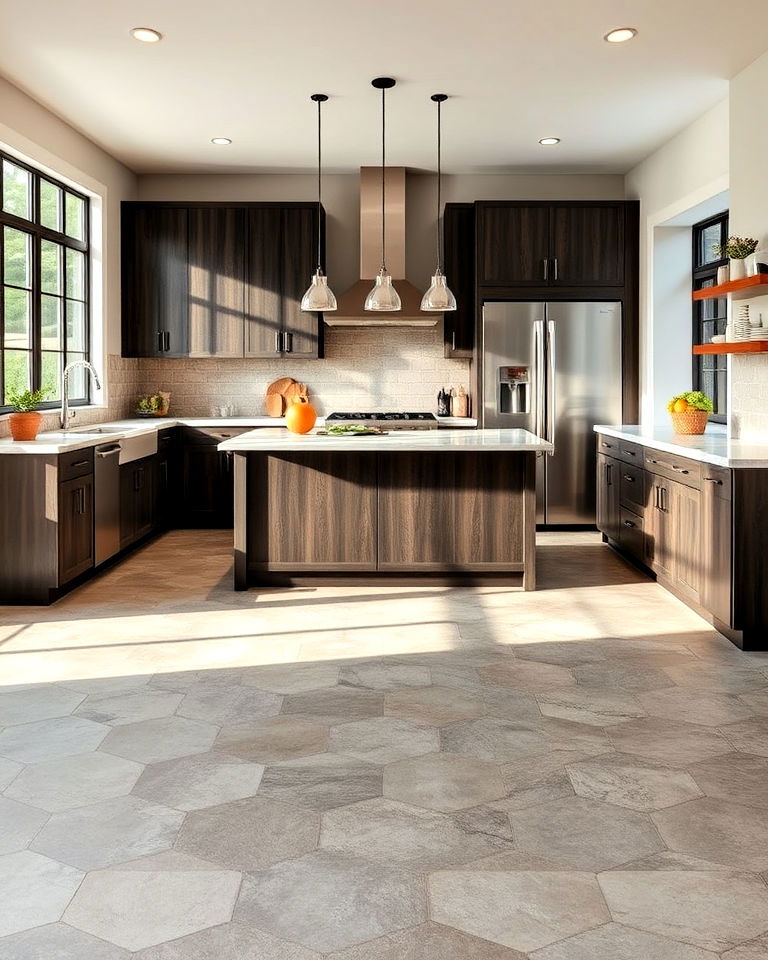
Geometric patterns etched or stamped into concrete floors can bring a modern, artistic flair to your kitchen, similar to their use in feature walls. Whether it's hexagons, triangles, or custom shapes, geometric designs add a bold statement to the room while maintaining the practicality of concrete. This approach is ideal for homeowners looking to combine the durability of concrete with a unique, visually striking element that sets their kitchen apart.
14. Use Concrete as a Canvas for Artful Inlays
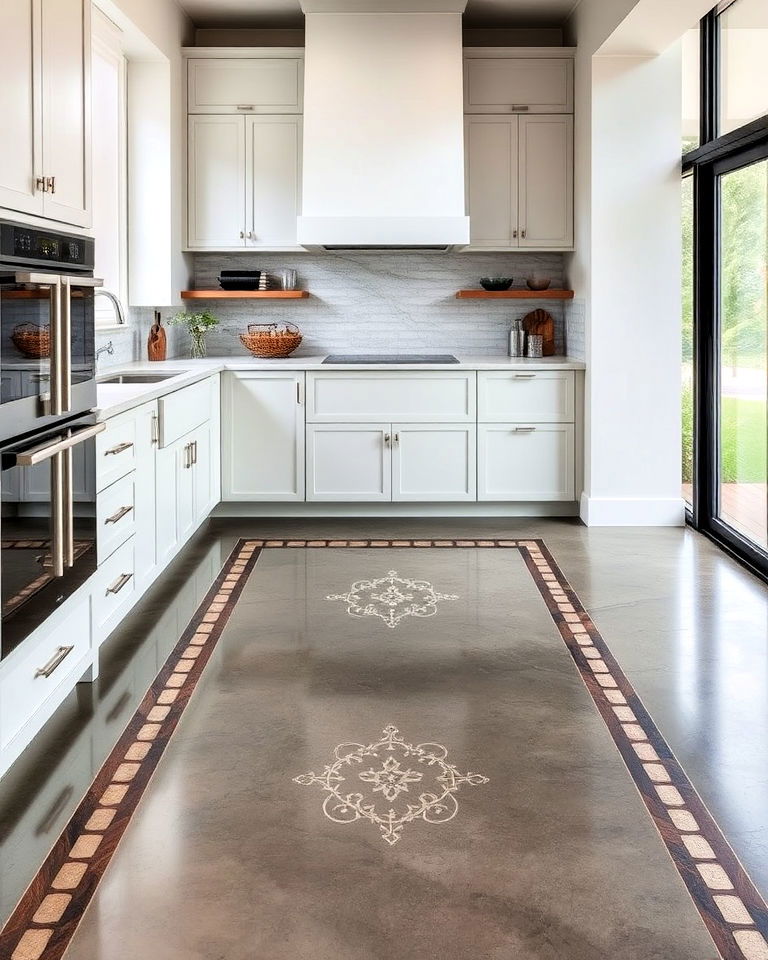
Explore timeless charm and modern appeal with concrete floors kitchen designs for any home aesthetic. Artful inlays made of materials like metal, stone, or glass can turn a concrete kitchen floor into a unique work of art. These inlays can be simple borders or more intricate designs, creating a custom look that reflects your personal style, similar to stone inlays in bathrooms. Inlaid concrete floors are durable and easy to clean, while the added design elements make the kitchen feel more luxurious and tailored.
15. Embrace a Minimalist Aesthetic
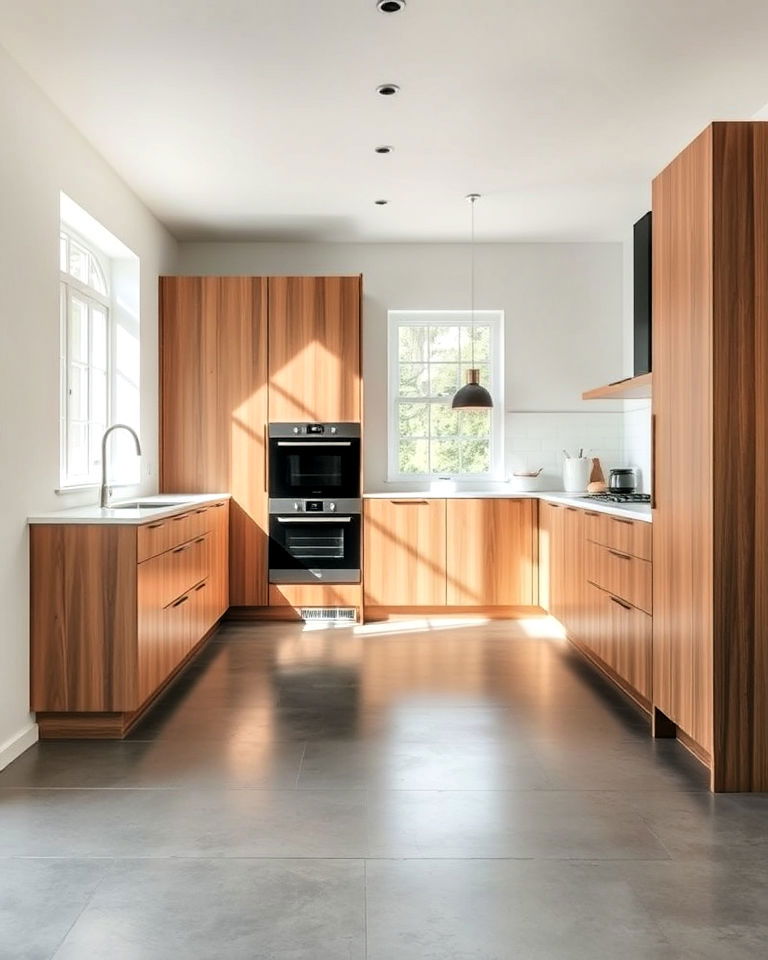
A minimalist concrete floor in a kitchen provides a sleek, modern foundation for your overall design. By keeping the floor simple and free of embellishments, you create a clean and airy feel that allows other elements in the kitchen—like cabinetry, appliances, and lighting—to shine. This minimalist approach works particularly well in modern or Scandinavian-style kitchens, where simplicity and functionality are key.
16. Experiment with Exposed Aggregate Concrete

Exposed aggregate concrete is a unique option that adds texture and visual interest to your kitchen floor. This finish reveals the stones within the concrete, creating a natural, tactile surface that works well in rustic or industrial-style kitchens. Exposed aggregate can be polished for a smoother look or left slightly rough for added grip and character.
17. Choose Concrete for Durability in High-Traffic Kitchens
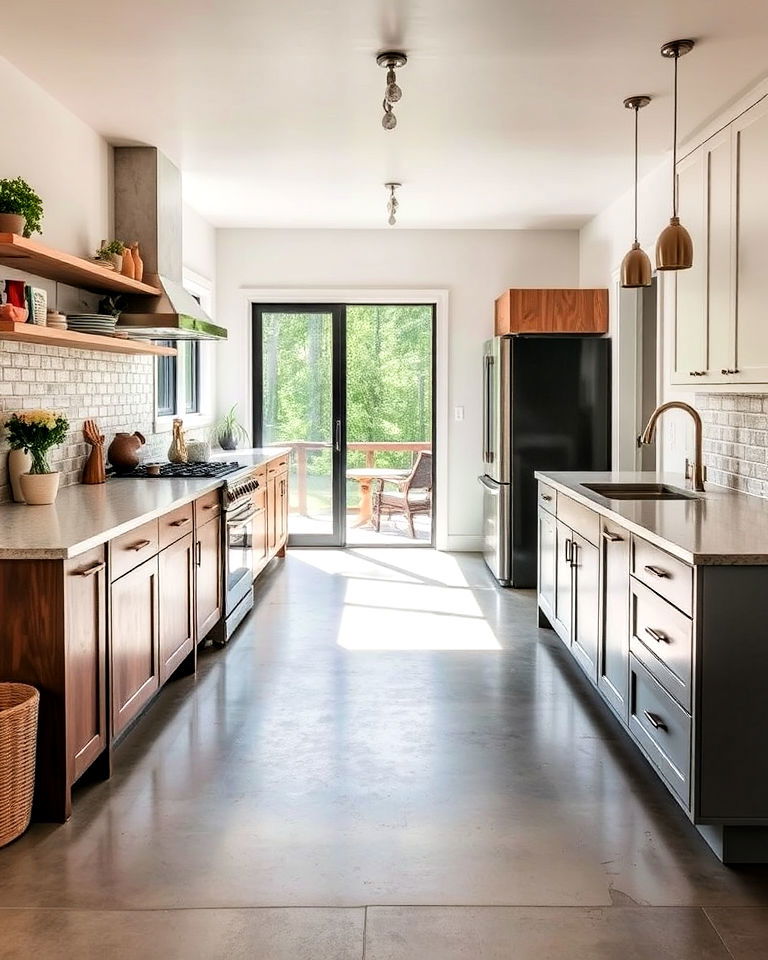
Concrete floors are incredibly durable, making them ideal for high-traffic kitchens. Whether you have a busy household or host frequent gatherings, concrete can withstand heavy foot traffic, spills, and the wear and tear of daily use. It's a long-lasting, low-maintenance option that won't need to be replaced or refinished as often as other flooring materials, making it a smart investment.
18. Combine Concrete with Bold Cabinetry
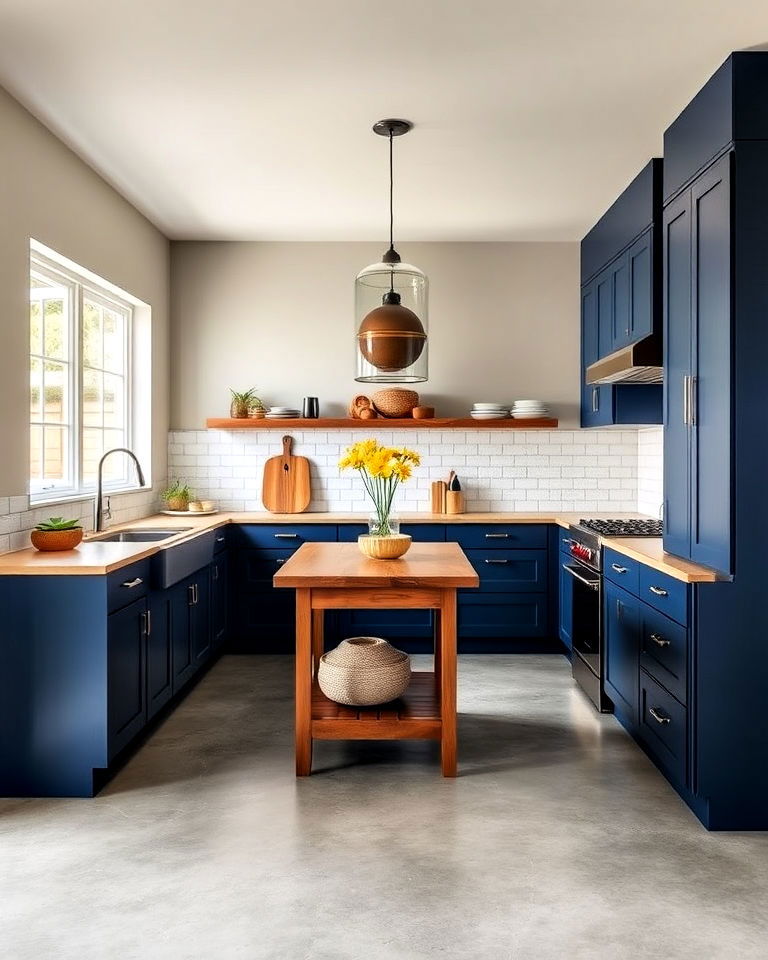
Create a contemporary vibe in your kitchen with concrete floors, blending durability and minimalist design. Pairing concrete floors with bold-colored cabinetry is a great way to add contrast and vibrancy to your kitchen. The neutral tone of concrete allows for bolder design choices with cabinetry, whether you opt for navy blue, deep green, or even bright yellow. This combination creates a striking visual balance, with the concrete providing a sleek, modern foundation for the more colorful elements of the kitchen.
19. Use Concrete in Eco-Friendly Kitchens

Concrete is a sustainable flooring option that can help reduce your environmental footprint. It's made from abundant natural materials and, when properly sealed, can last a lifetime. Concrete can also be combined with other eco-friendly elements, such as recycled glass or fly ash, to create a greener kitchen design, much like natural bathroom ideas. Its durability means less waste in the long run, making it a top choice for environmentally-conscious homeowners.
20. Add Texture with Brushed Concrete
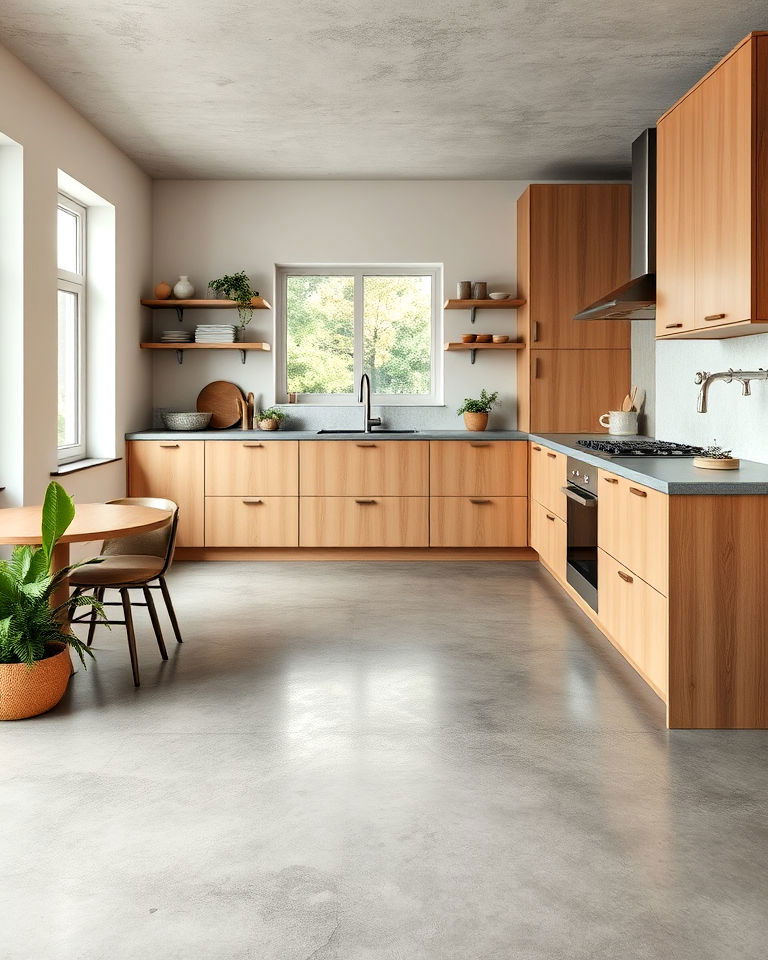
Brushed concrete floors feature a lightly textured surface created by brushing the concrete before it fully sets. This finish adds subtle texture and interest to the floor while also improving slip resistance, making it ideal for kitchens. Brushed concrete works particularly well in modern or industrial kitchens, where the added texture complements sleek cabinetry and minimal decor, similar to modern small garden ideas.
21. Use Concrete for a Seamless, Grout-Free Surface
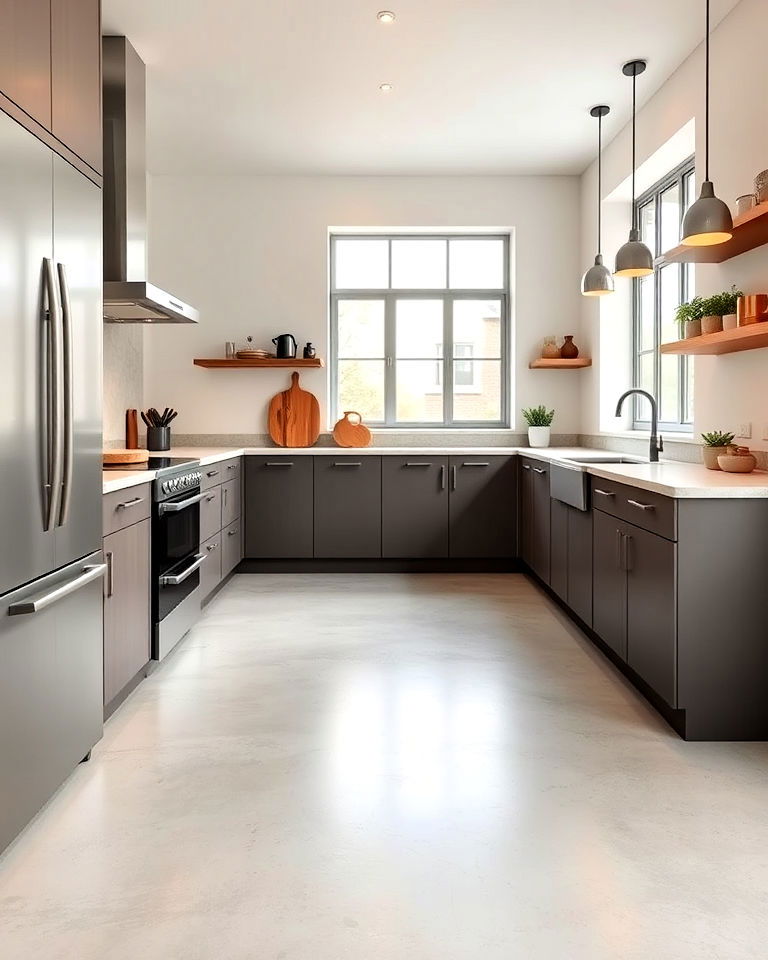
A seamless, grout-free concrete floor offers a clean, uninterrupted look that is perfect for modern kitchens. This surface is easy to maintain and clean, as there are no grout lines to trap dirt and grime. Seamless concrete floors also give the room a contemporary, open feel, making the kitchen appear larger and more streamlined.
22. Choose Concrete for Easy Maintenance
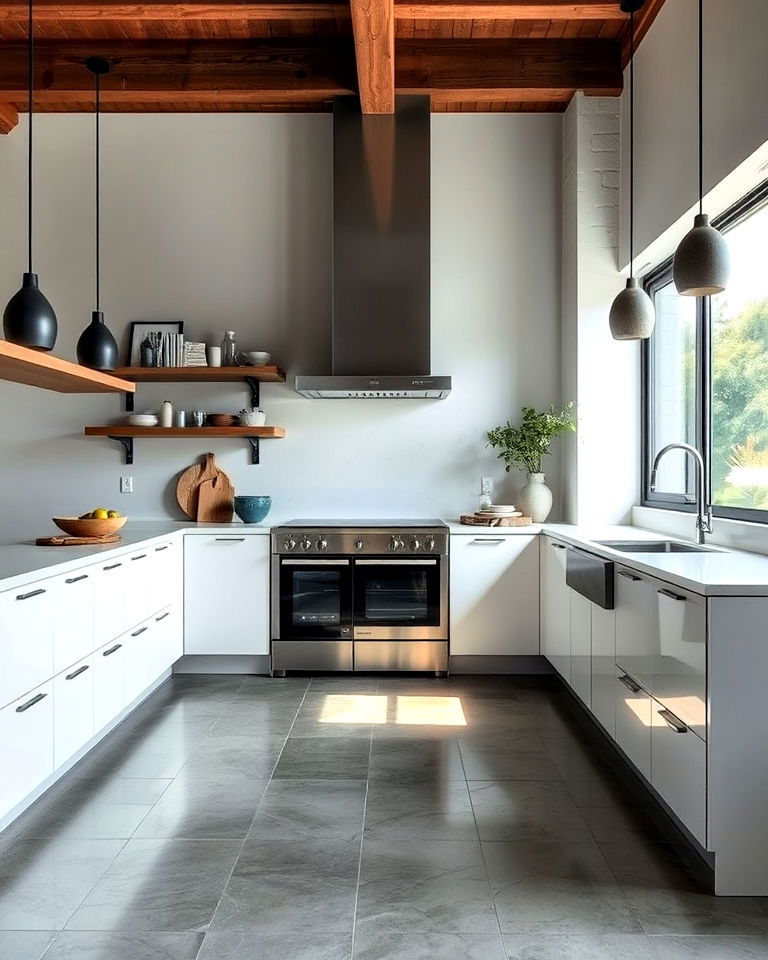
Concrete floors are incredibly easy to maintain, making them a practical choice for busy kitchens. They resist stains, water damage, and scratches, requiring only regular sweeping and occasional mopping. When properly sealed, concrete is virtually impervious to spills, which can simply be wiped away, making it a low-maintenance option that still looks sleek and modern.
23. Achieve a Rustic Look with Trowel-Finished Concrete
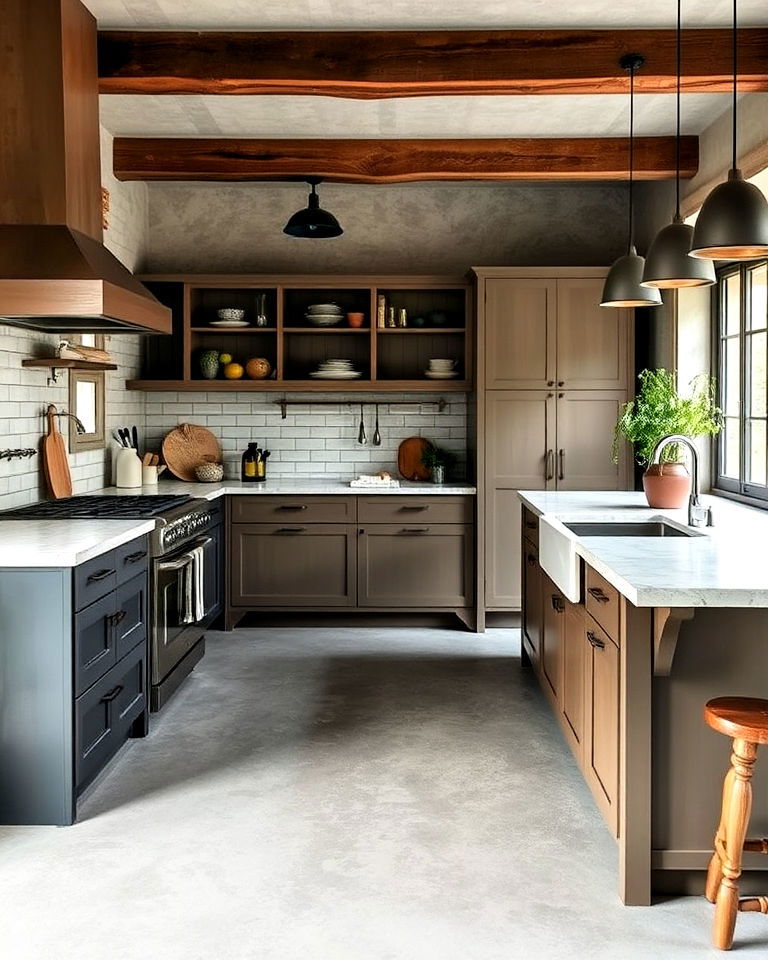
Trowel-finished concrete provides a slightly rough, rustic texture that works well in farmhouse or industrial kitchens. The surface can be left in its natural gray tone or stained to achieve different looks, from earthy browns to cool grays. Trowel-finished concrete adds character and interest while maintaining the durability and practicality that concrete floors are known for.
24. Experiment with Two-Tone Concrete
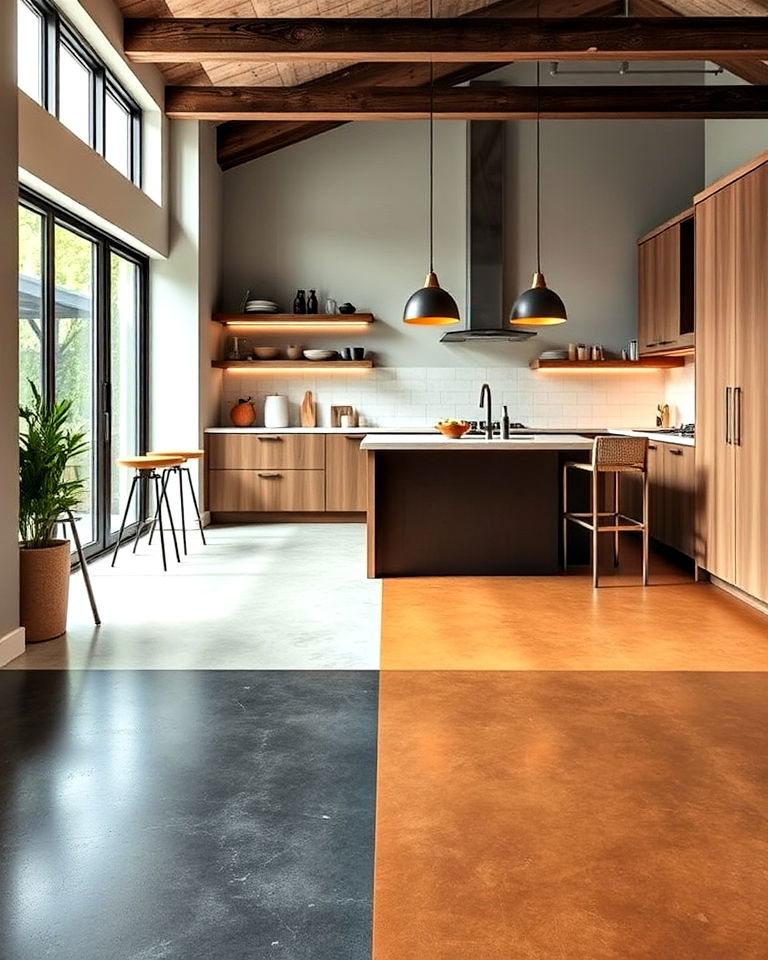
Experience the versatility of concrete floors in kitchen spaces, offering functionality and modern flair. For a modern twist on concrete flooring, consider a two-tone design. This look involves using different shades of concrete or dye to create contrasting areas or borders within the kitchen. A two-tone concrete floor adds visual interest and depth to the space without overwhelming it, making it a great option for contemporary kitchens that embrace bold, creative designs.
25. Use Concrete as a Blank Canvas for Bold Decor
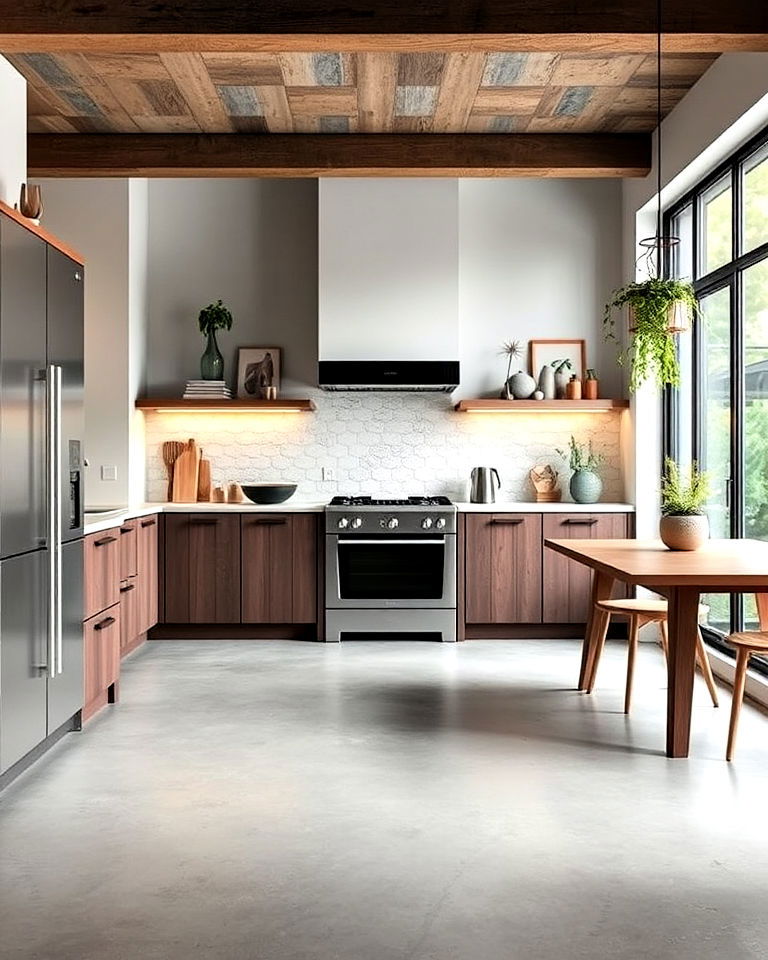
Concrete floors act as a neutral canvas, allowing you to experiment with bolder decor elements in the kitchen. The simplicity of concrete provides the perfect backdrop for colorful backsplashes, statement lighting, or eye-catching appliances. This flexibility makes concrete a versatile choice for those who like to change their kitchen's style over time without needing to replace the flooring.
Conclusion:
Concrete kitchen floors bring a unique blend of durability, style, and versatility to any home. From polished finishes to acid-washed or stained designs, each option offers a distinct look while ensuring low-maintenance and long-lasting performance. With the ability to customize through color, texture, and design, concrete floors can complement any kitchen aesthetic, from industrial to rustic or contemporary. For homeowners seeking a practical yet stylish flooring solution, concrete stands out as a reliable and visually appealing choice.
Key Points:
- Versatility of Concrete: Concrete floors offer a range of design options, from polished, industrial looks to warm, rustic styles.
- Durability and Low Maintenance: Concrete is incredibly durable and easy to maintain, making it ideal for high-traffic kitchens.
- Customization Options: You can customize concrete with stains, dyes, inlays, and patterns to fit any kitchen aesthetic, whether modern, contemporary, or traditional.
- Textural and Visual Appeal: Concrete can incorporate textures, such as brushed or exposed aggregate finishes, to add depth and character to the space.
- Enhanced Comfort: Pairing concrete with radiant heating systems ensures warmth and comfort, particularly in colder climates.
What to Do Next:
- Select Your Preferred Style: Decide on the overall design of your kitchen, whether industrial, minimalist, or rustic, to guide your concrete floor choice.
- Consider Customization: Explore staining, dyeing, or adding texture to your concrete floors to match your kitchen's aesthetic.
- Plan for Comfort: If you live in a cooler area, consider incorporating radiant heating for added warmth and comfort.
- Coordinate with Other Elements: Balance your concrete floor with complementary materials, such as wood or bold cabinetry, to create a cohesive look.

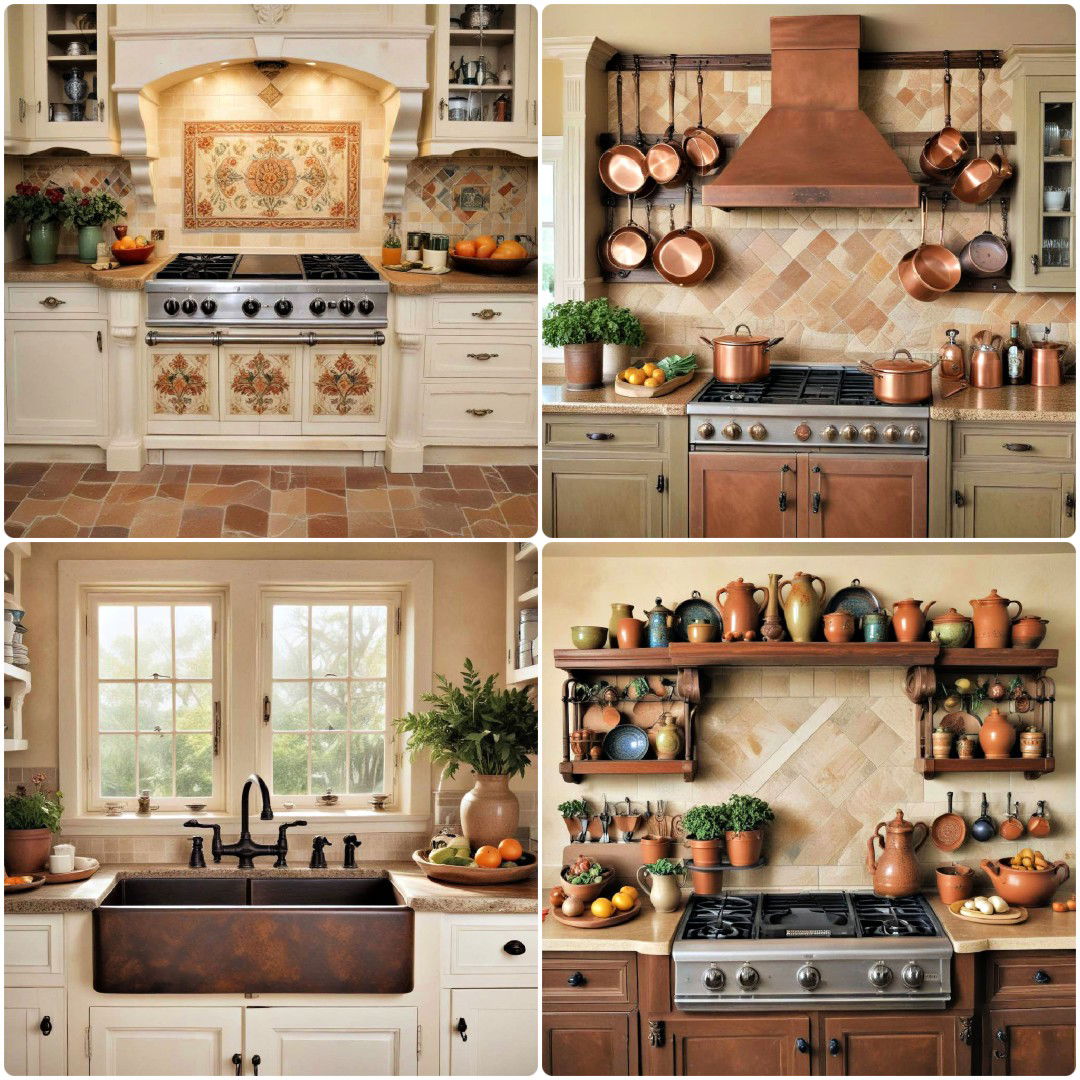
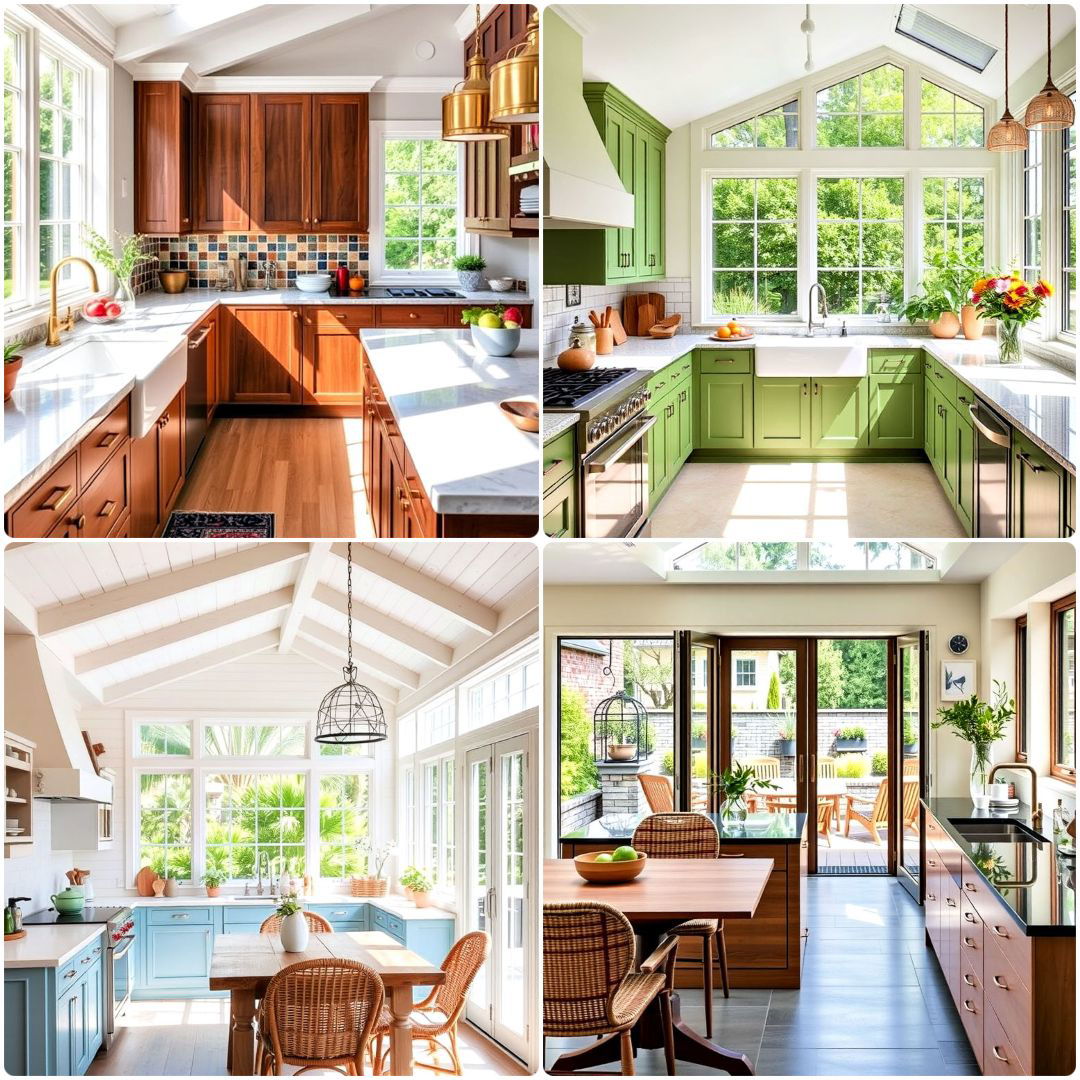
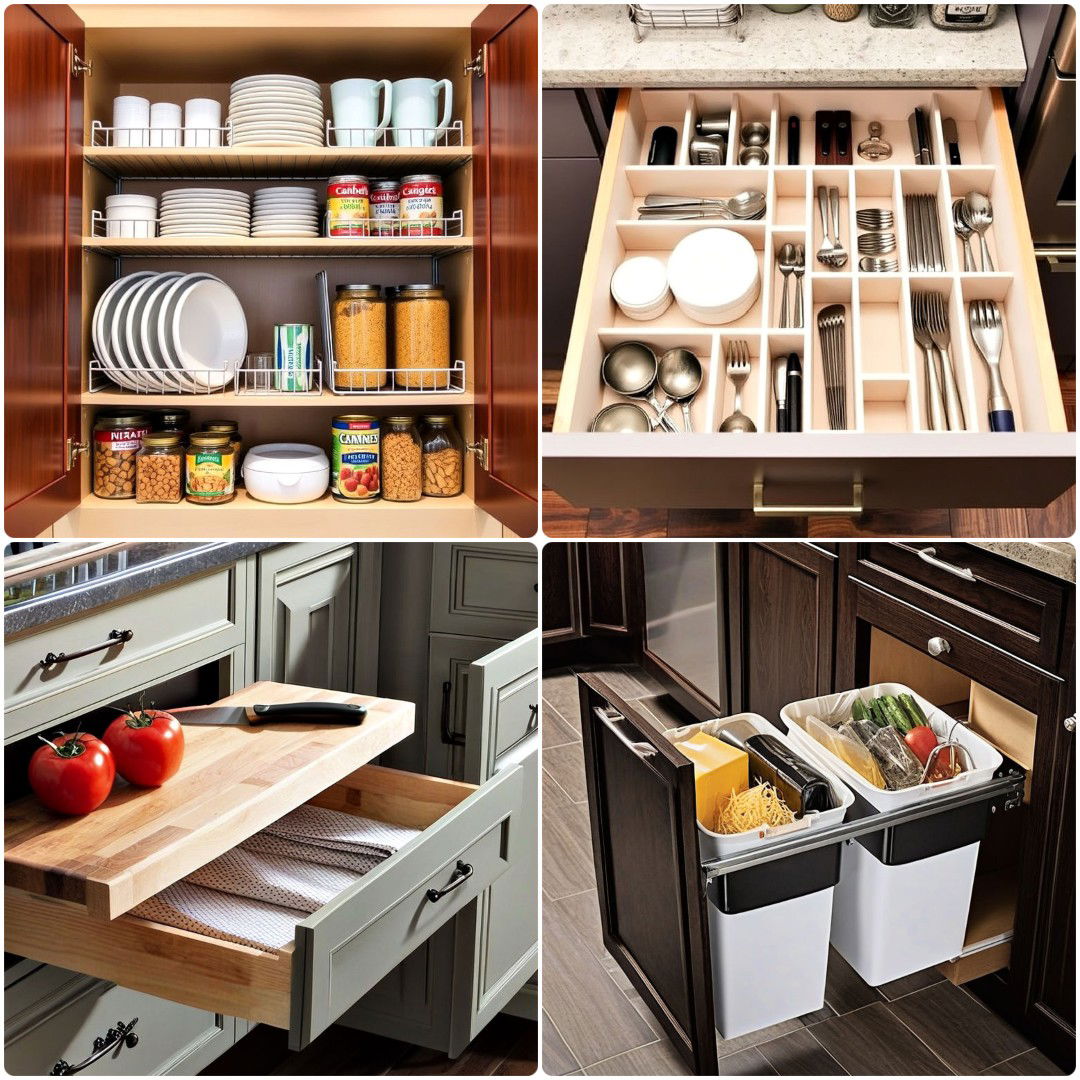
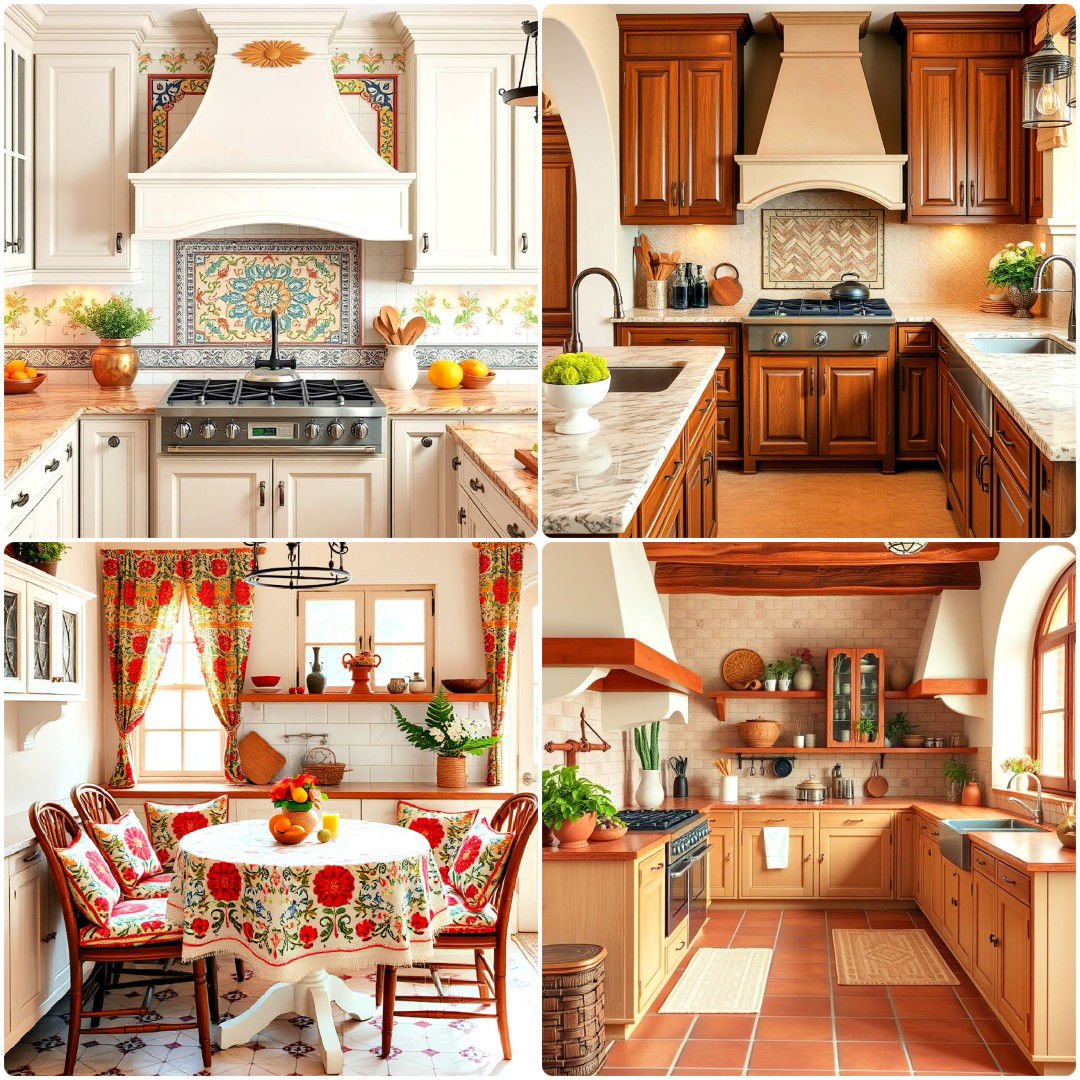

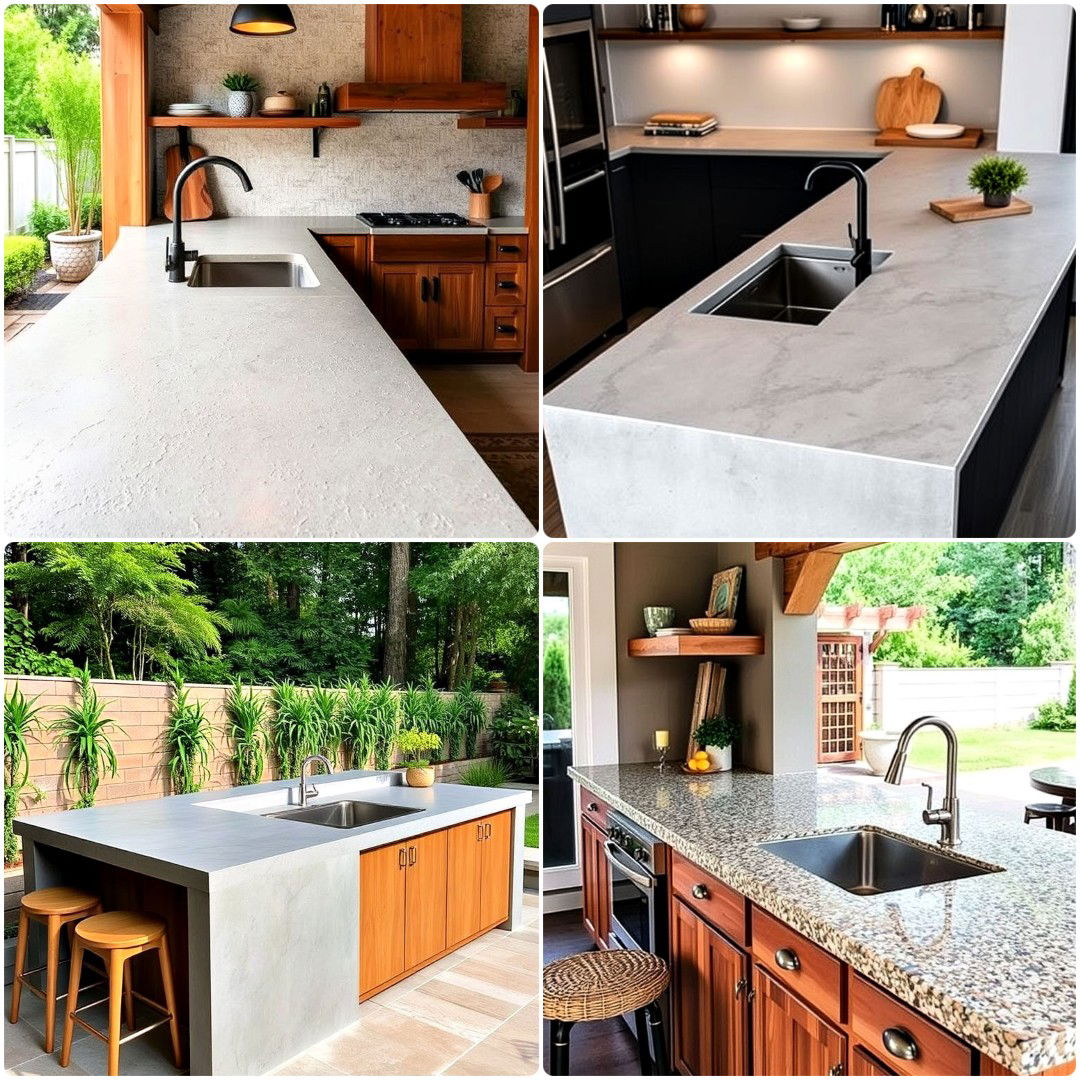
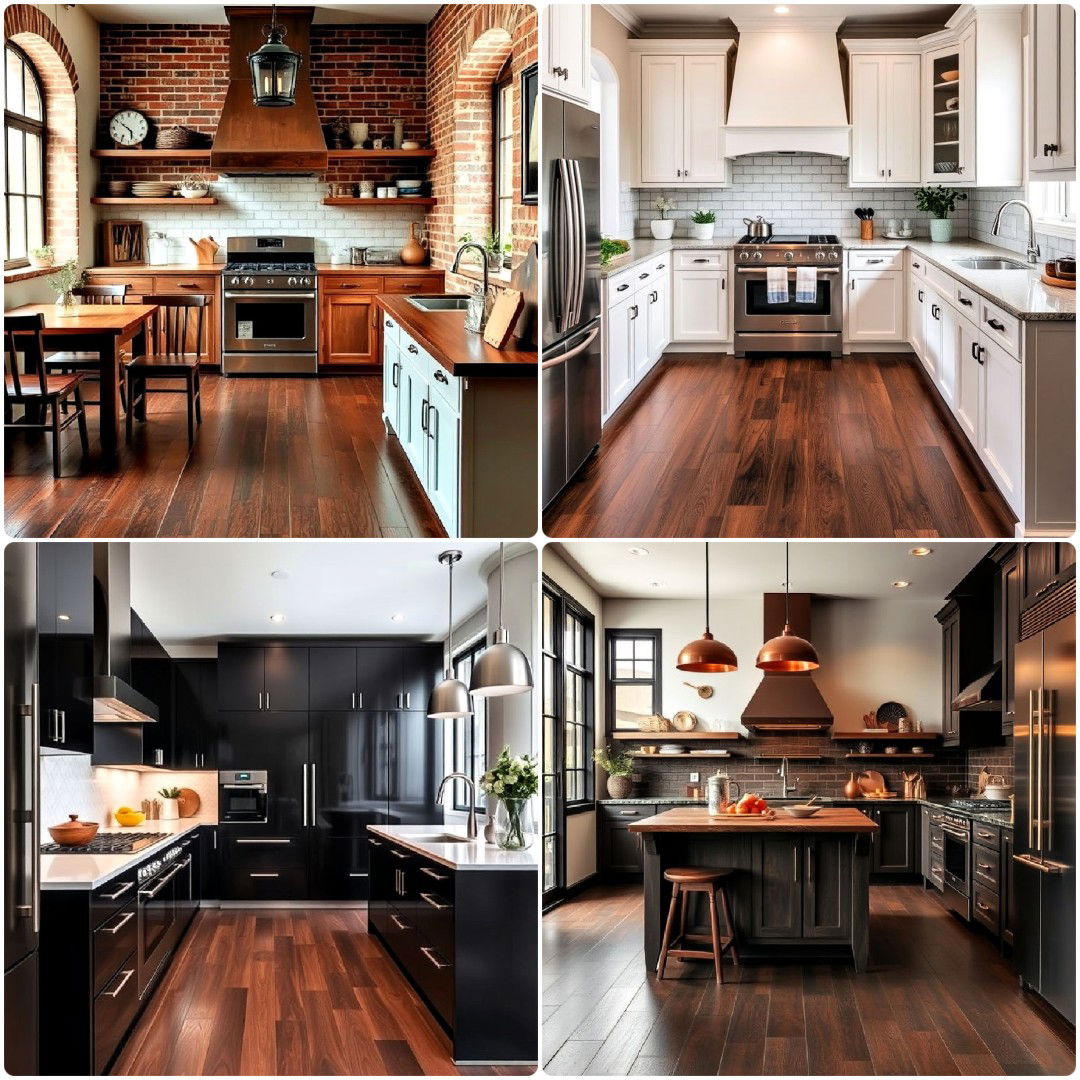
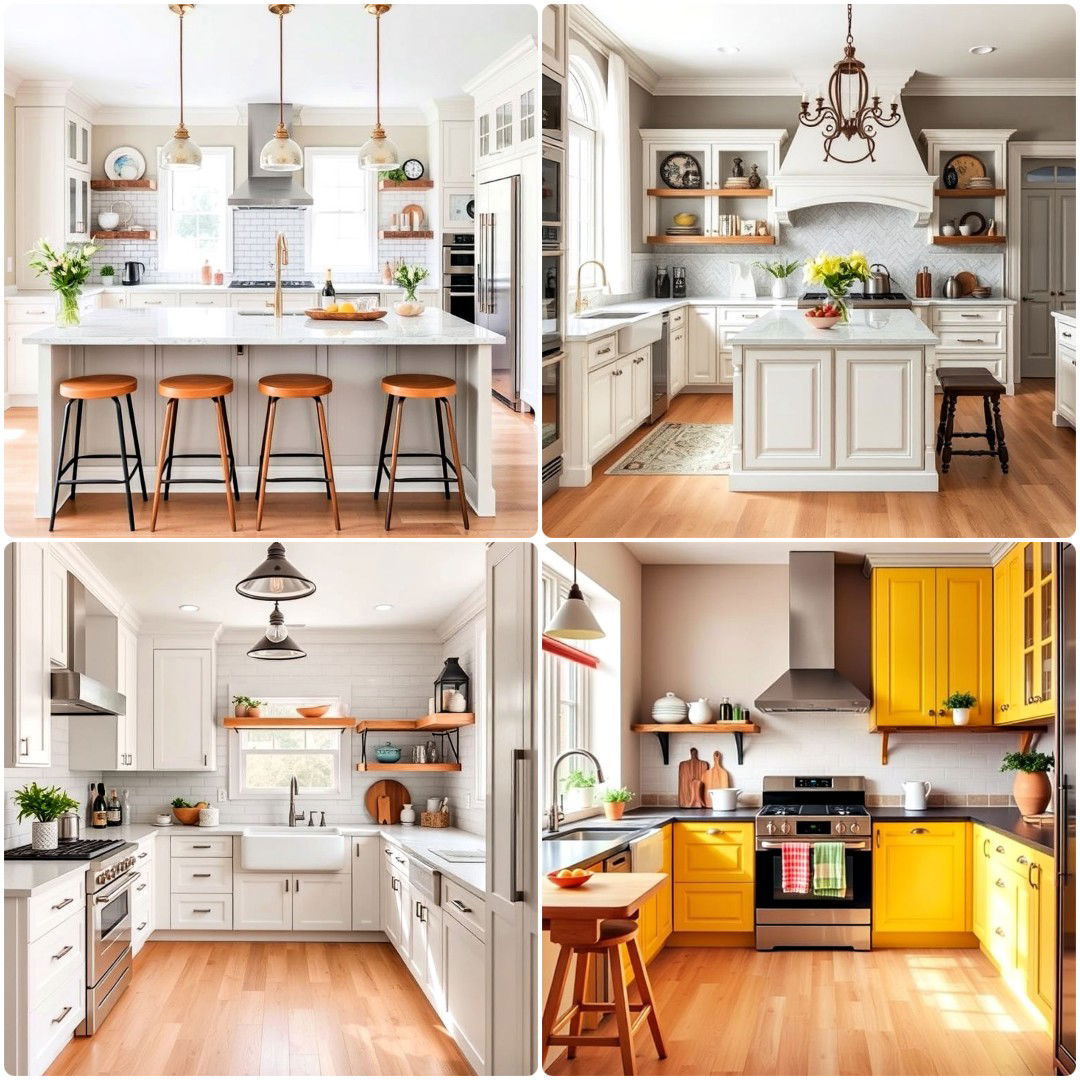
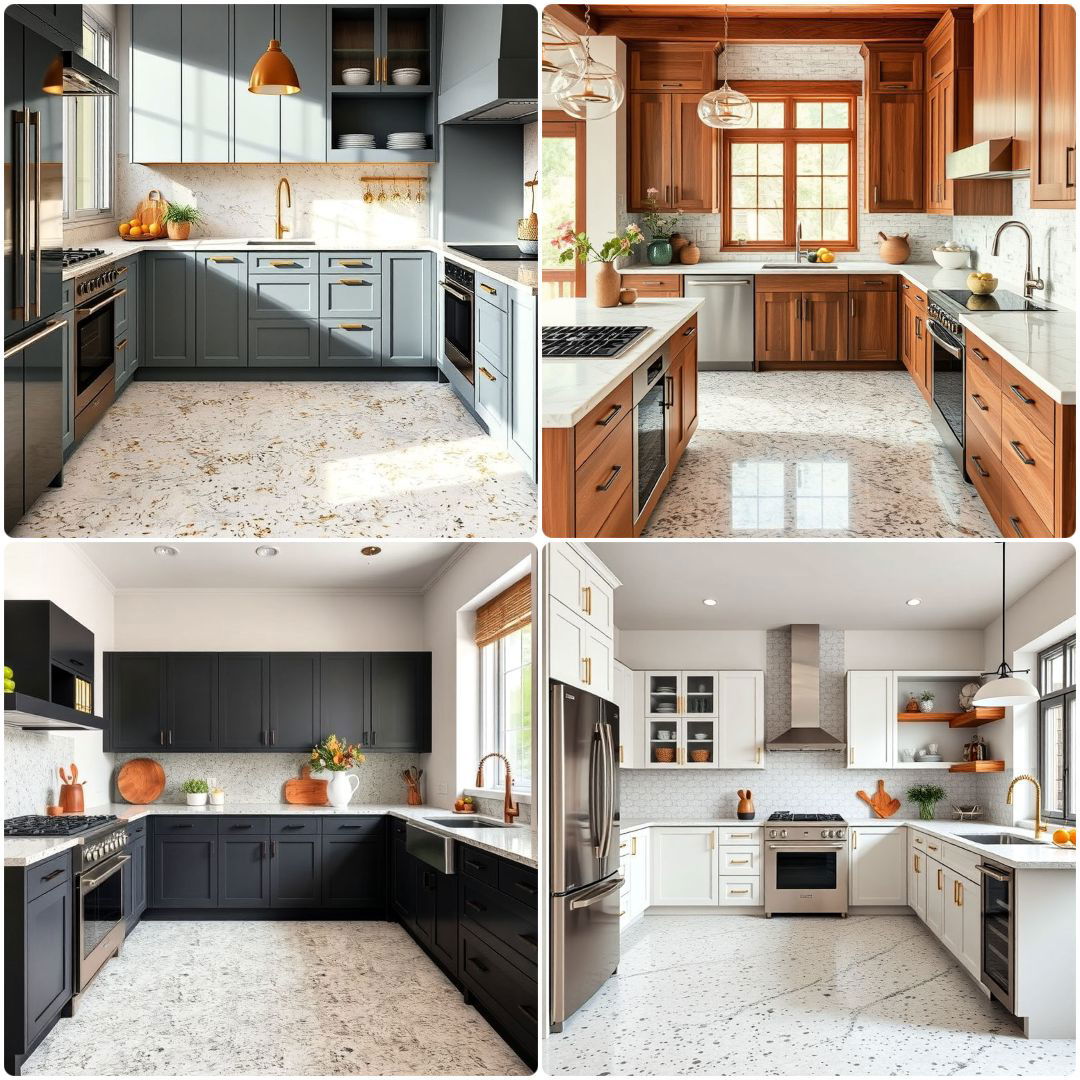
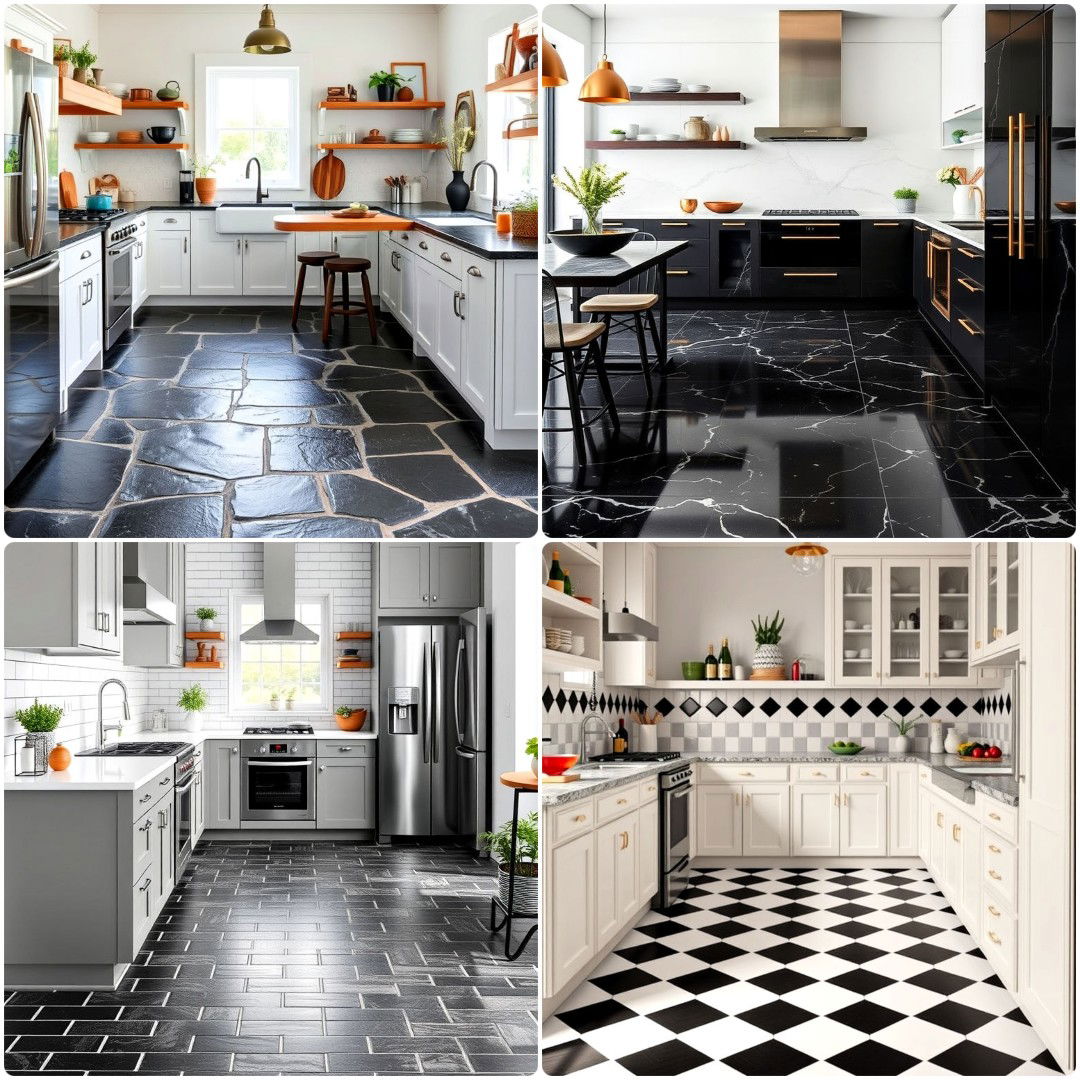
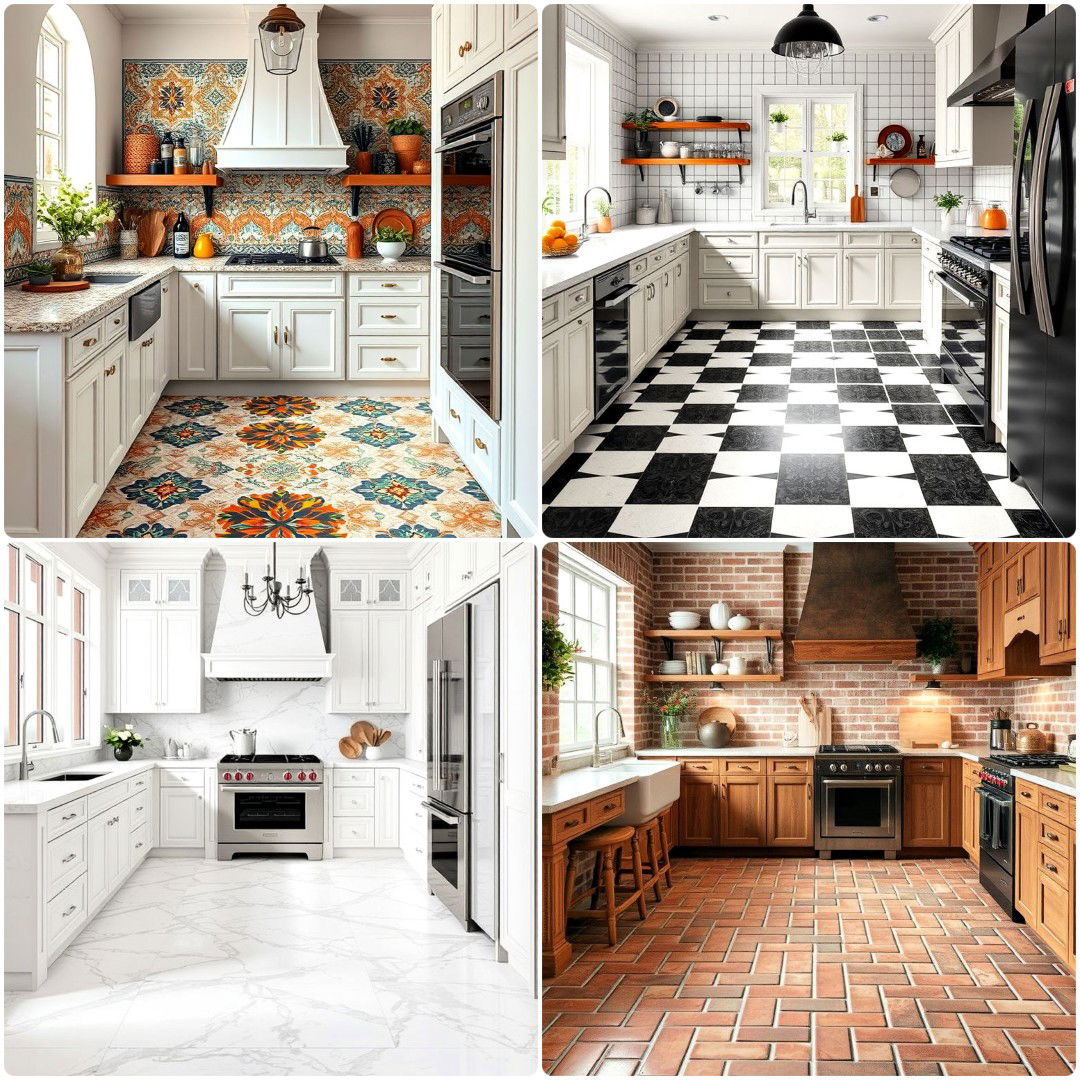
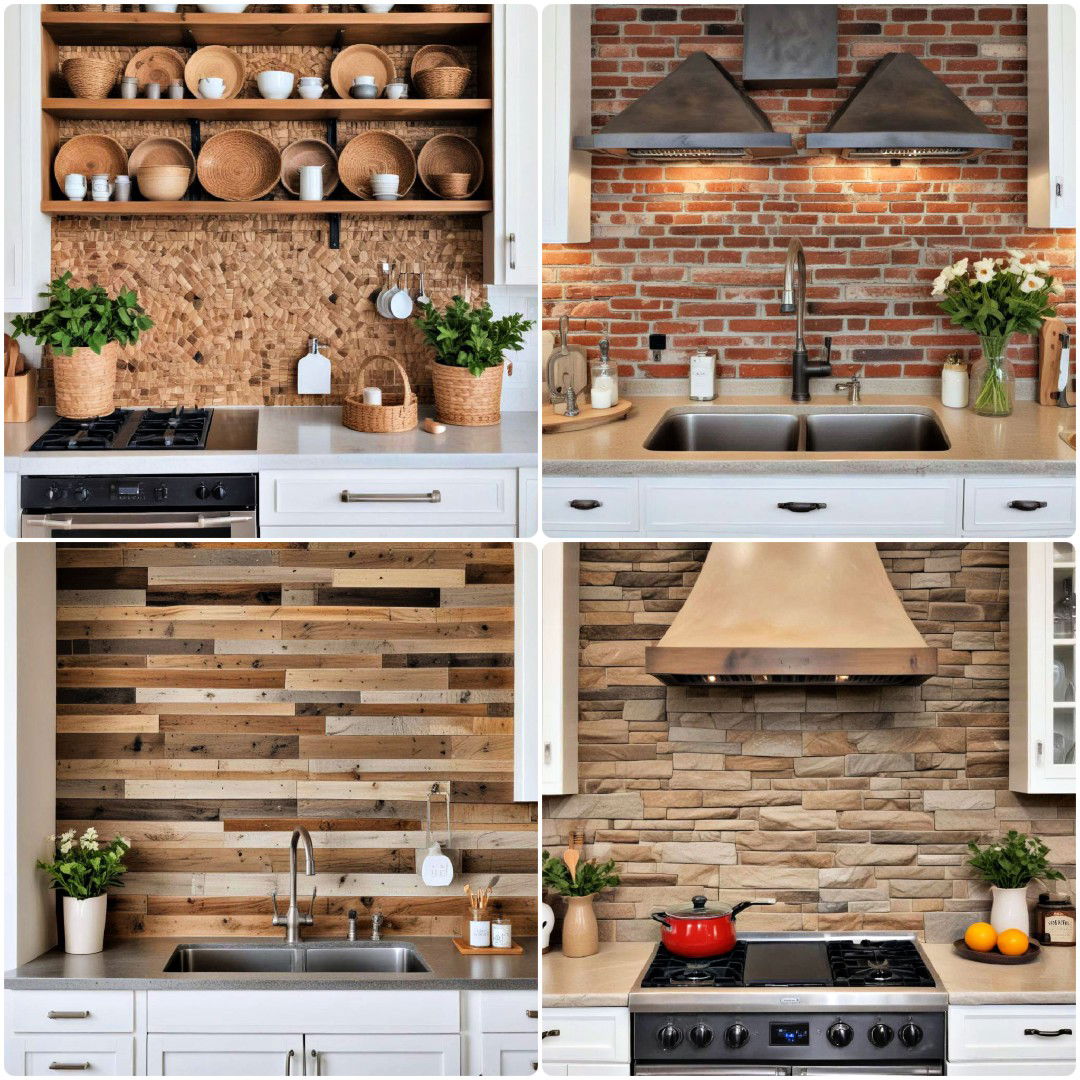
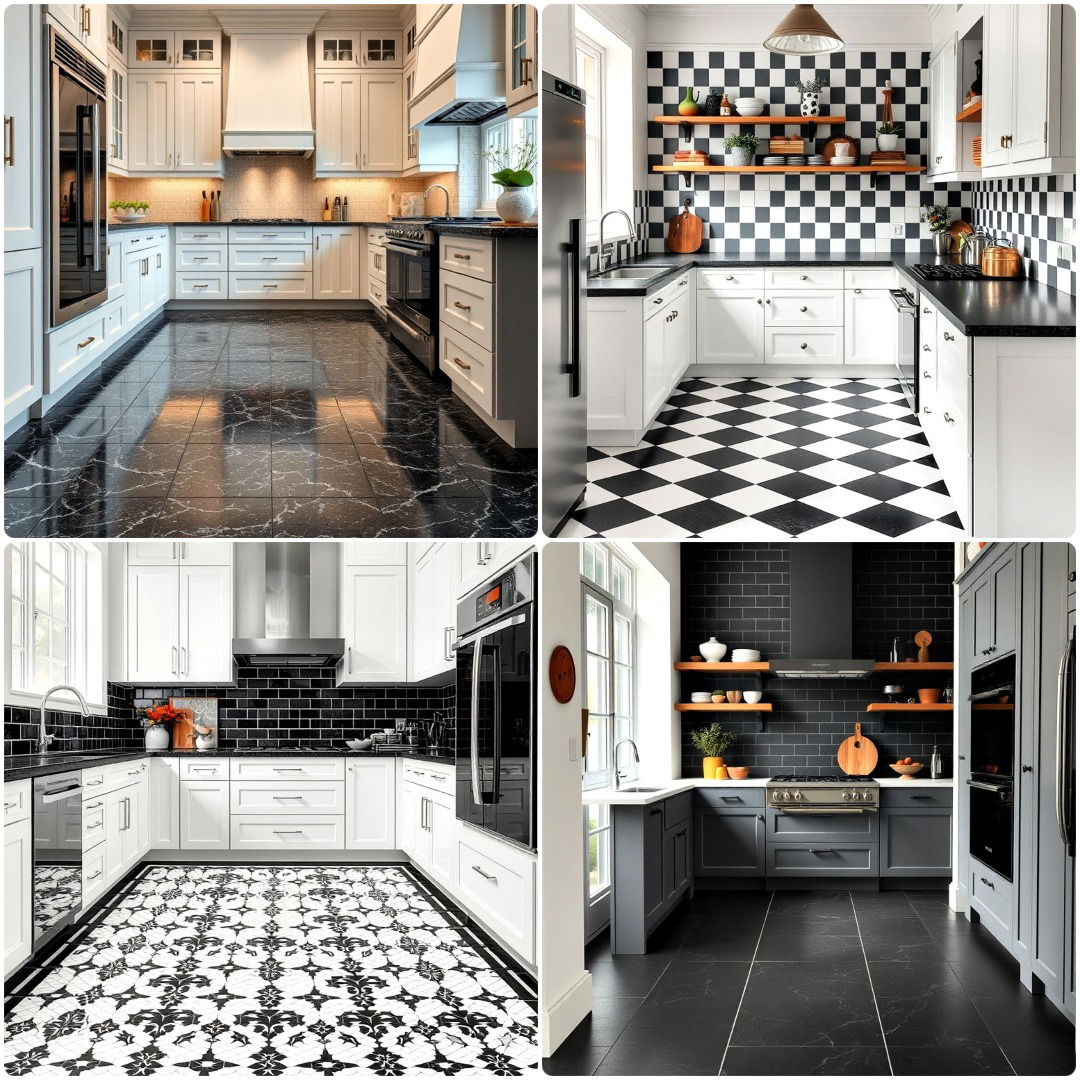
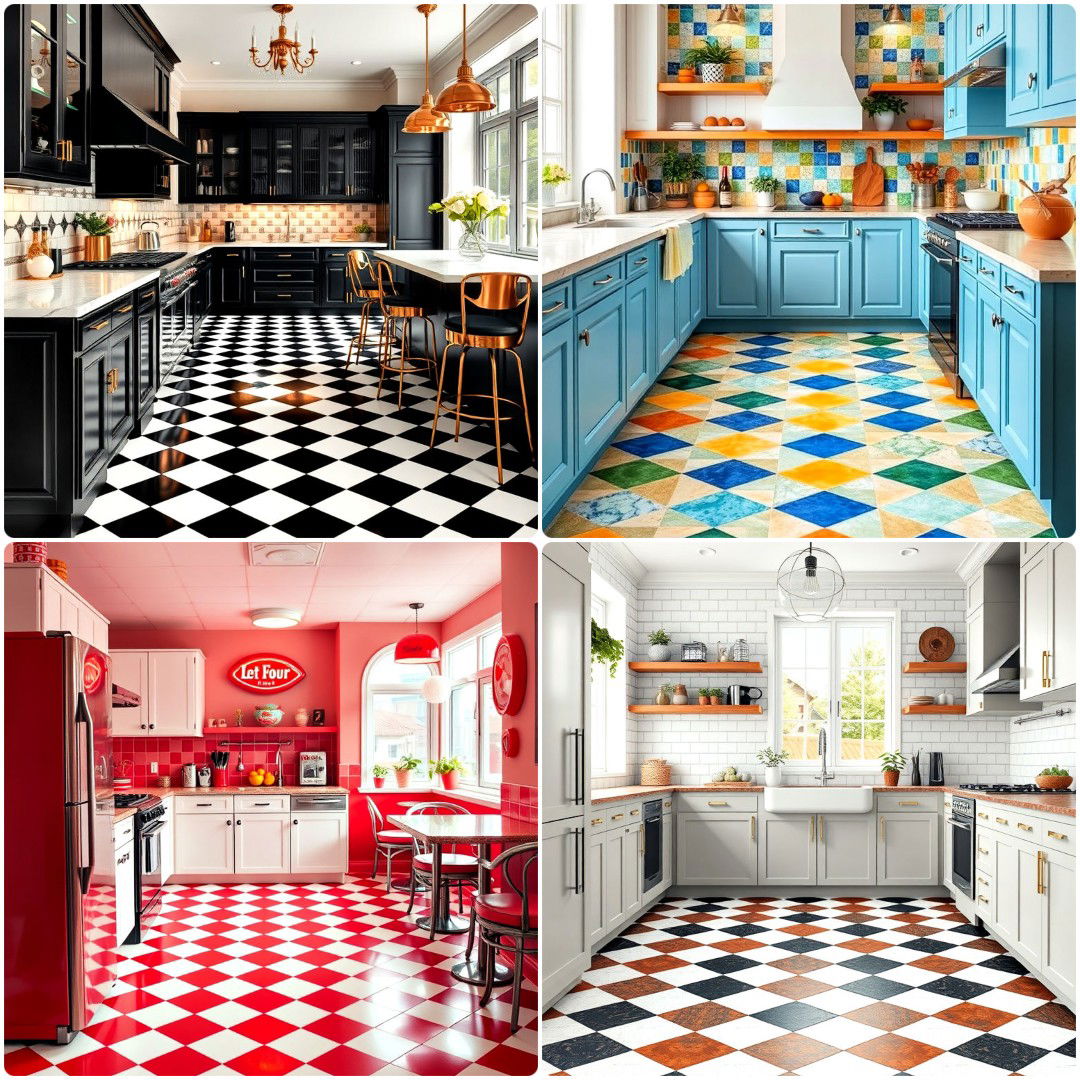
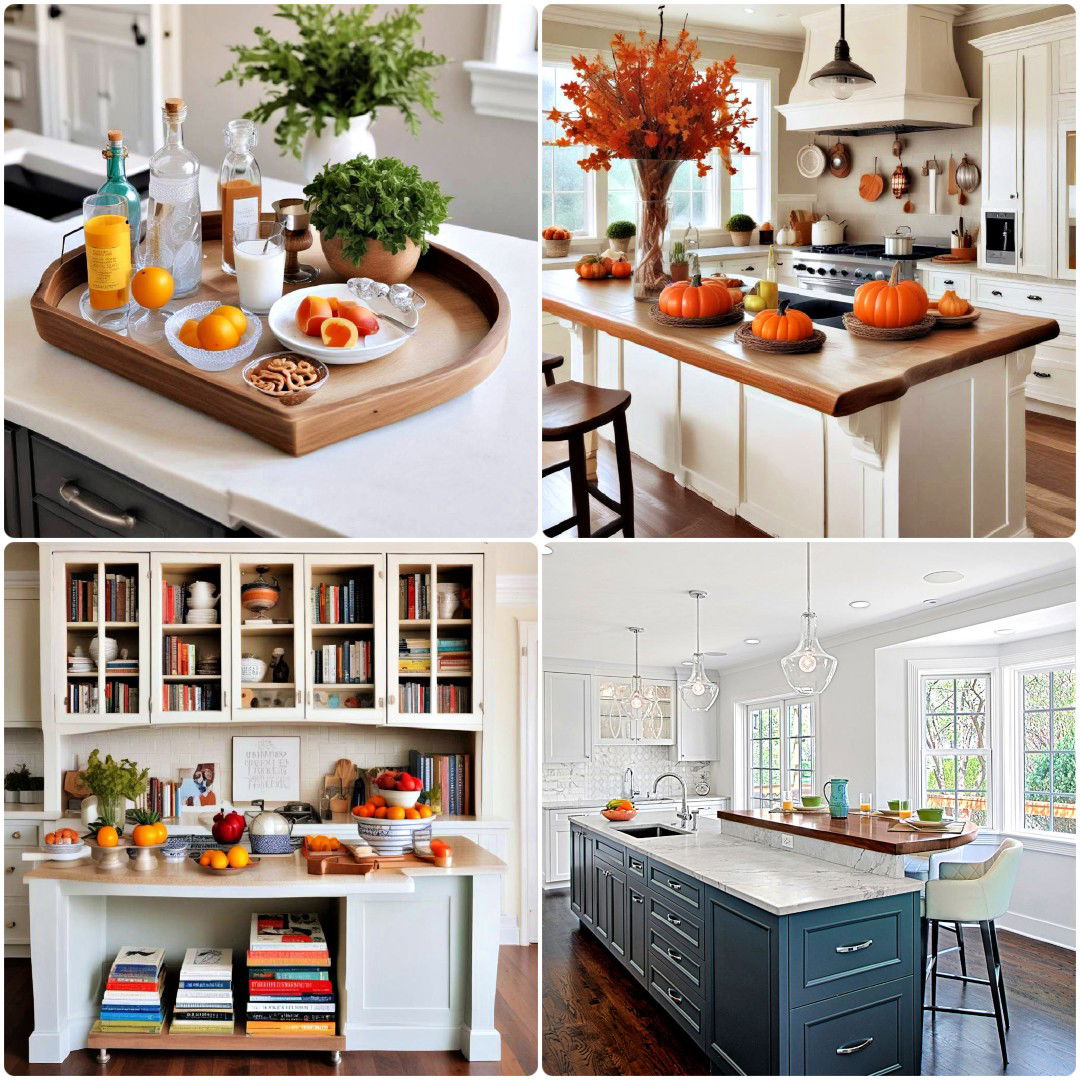
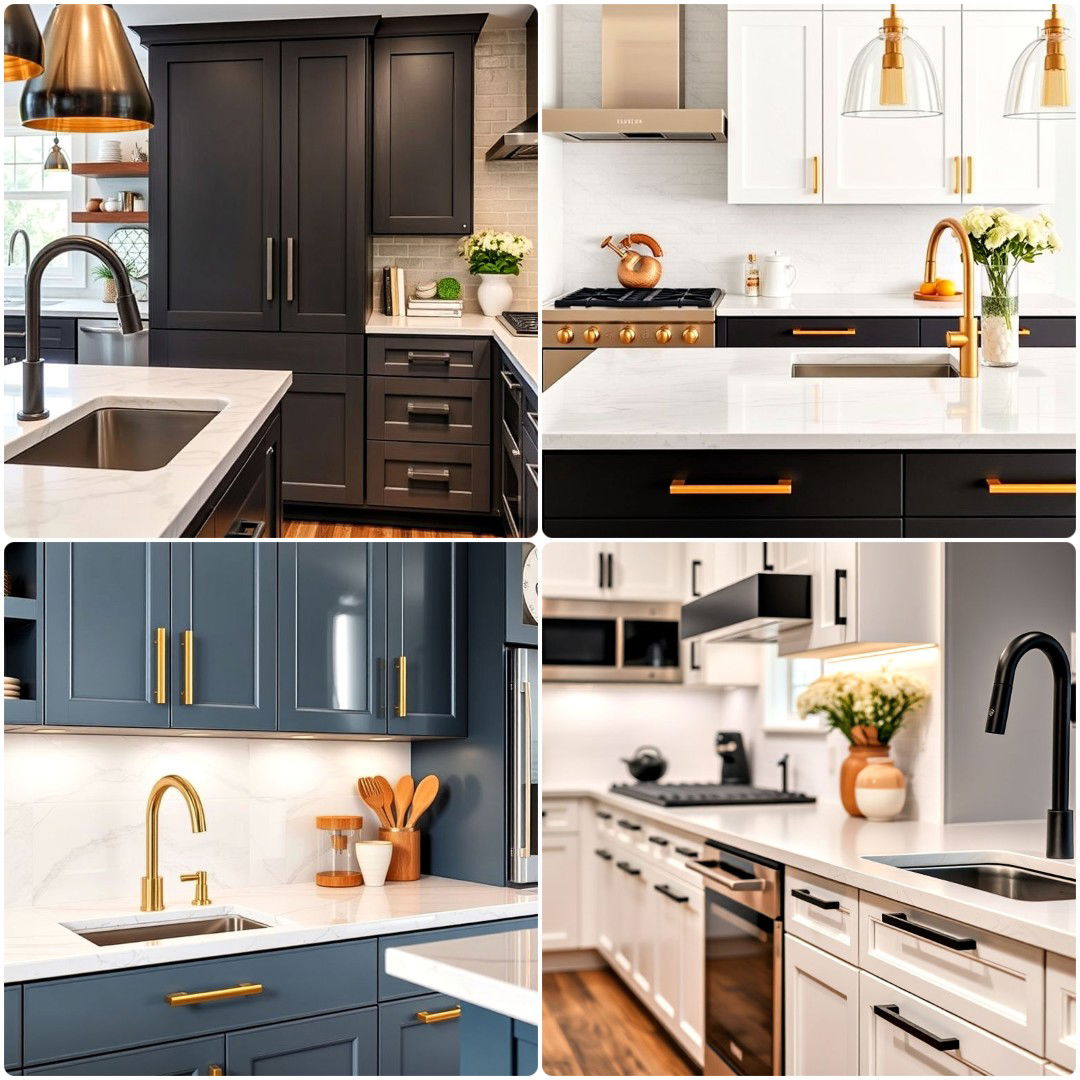
Leave a Reply